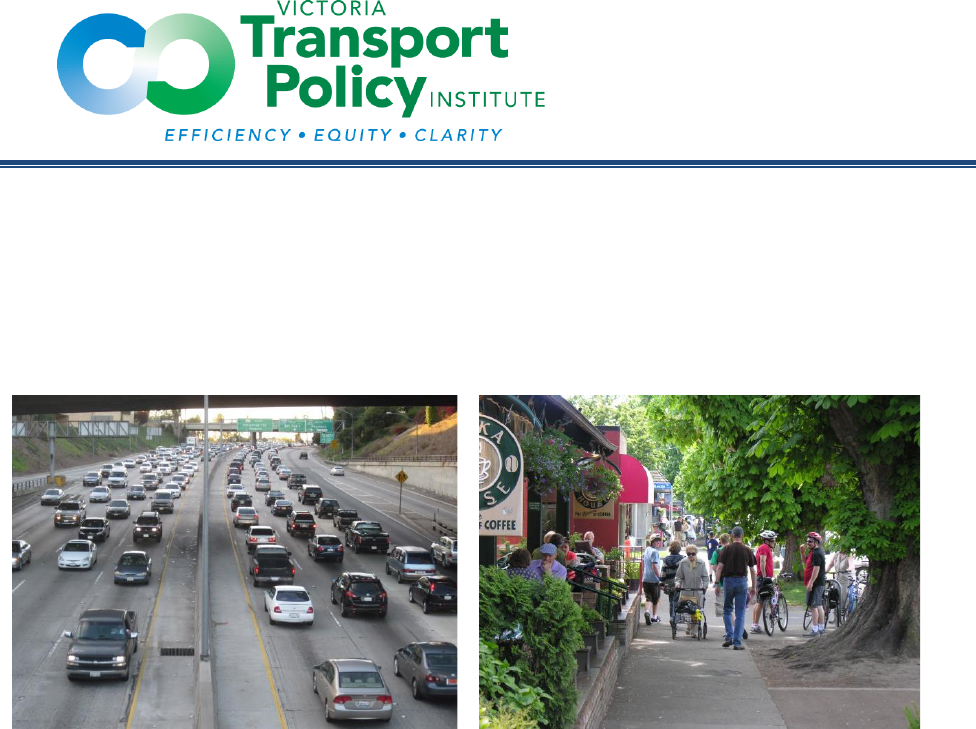
Todd Litman © 2009-2023
You are welcome and encouraged to copy, distribute, share and excerpt this document and its ideas, provided the author is given
attribution. Please send your corrections, comments and suggestions for improvement.
Are Vehicle Travel Reduction Targets Justified?
Why and How to Reduce Excessive Automobile Travel
31 July 2024
Todd Litman
Victoria Transport Policy Institute
Current planning practices create automobile-dependent communities. Vehicle travel reduction targets help
create more compact, multi-modal communities where less driving is needed to serve people’s needs.
Abstract
This study reflects the recognition that too much of a good thing is not good. Although
motor vehicle travel can provide large benefits, it also imposes significant costs on users
and communities. To be efficient and equitable, planning should strive to optimize
vehicle travel: not too little and not too much. This study identifies current planning
practices that overvalue and overinvest in automobile infrastructure to the detriment of
other modes. This is unfair to non-drivers and results in economically-excessive vehicle
travel. Planning reforms are justified to create more diverse and efficient transportation
systems where people can meet their needs with less driving. To guide these reforms,
some jurisdictions establish vehicle travel reduction targets. These help align individual
planning decisions with strategic objectives. This report investigates why and how to
implement such targets. It describes how to determine optimal levels of vehicle travel,
identifies effective vehicle travel reduction strategies, and evaluates common criticisms.
It concludes that with better planning and more efficient incentives people would drive
less, rely more on non-auto modes and be better off overall as a result.
A condensed version of this report was presented at the
2023 World Conference for Transportation Research in Montreal, Canada.
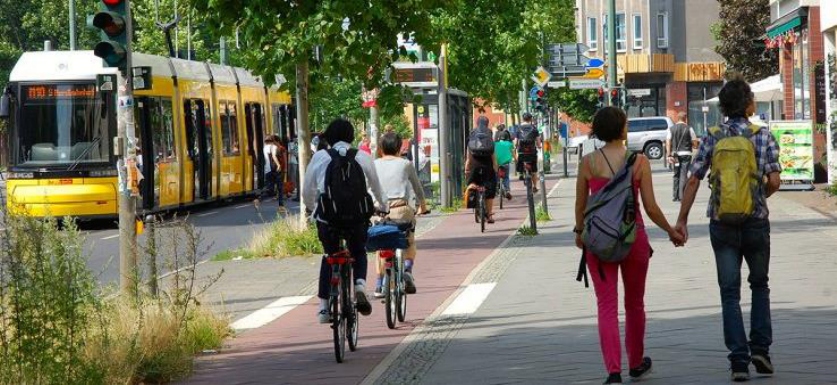
Are Vehicle Travel Reduction Targets Justified?: Why and How to Reduce Excessive Automobile Travel
Victoria Transport Policy Institute
1
An efficient and equitable transportation system must be diverse in order to serve diverse
demands, including the needs of people who cannot, should not, or prefer not to drive. Vehicle
travel reduction targets help align planning decisions to support these objectives.
Table of Contents
Introduction ..................................................................................................................................... 2
Examples of Travel Reduction Targets ............................................................................................ 4
Factors Affecting Vehicle Travel ...................................................................................................... 5
How Much Vehicle Travel is Optimal? What Should be Reduced? ................................................. 7
Optimizing for Accessibility Rather Than Mobility ..................................................................................... 7
Auto and Non-Auto Travel Demands ......................................................................................................... 7
Economic Analysis ...................................................................................................................................... 8
Economic Principles ................................................................................................................................... 9
Summary .................................................................................................................................................. 13
Vehicle Travel Reduction Strategies .............................................................................................. 14
Potential Savings and Benefits ...................................................................................................... 16
Examples ........................................................................................................................................ 17
Evaluating Criticisms ...................................................................................................................... 20
Conclusions .................................................................................................................................... 25
References ..................................................................................................................................... 26

Are Vehicle Travel Reduction Targets Justified?: Why and How to Reduce Excessive Automobile Travel
Victoria Transport Policy Institute
2
Introduction
Too much of a good thing is not good. For example, although eating makes us happy and healthy,
many people consume too much and the wrong types of food. Public health requires improving
food quality rather than quantity. Older policies designed to make rich and sweet food abundant
and cheap, such as corn, milk, beef and sugar subsidies, are inappropriate for people suffering
from obesity.
Similarly, many transportation planning practices created when mobility was scarce are intended
to maximize motor vehicle travel, with little consideration for other modes or goals. “Predict and
provide” planning, which expanded roadways in anticipation of traffic growth, created a self-
reinforcing cycle of automobile-dependency and sprawl. Such planning fails to serve people who
cannot, should not, or prefer not to drive, and increases many costs. More multimodal and
efficient transportation systems requires “decide and deliver” planning, as illustrated below.
Figure 1 From Predict-and-Provide to Decide-and-Deliver (Lyons 2020)
Predict and Provide
Decide and Deliver
“Predict and provide” transportation planning expanded roads and parking facilities in anticipation of
future demands, creating a self-reinforcing cycle of automobile dependency and sprawl. “Decide and
deliver” planning sets multimodal travel targets and implements policies to achieve them.
Current trends – aging population, urbanization, changing preferences, plus growing concerns
about affordability, public health and environmental quality, plus improved telecommunications
and e-bike technologies – are increasing non-auto travel demands and the value of serving them.
You benefit if your neighbors drive less and use more resource-efficient modes. This is therefore
a good time to reassess planning practices to ensure that they respond to changing needs.
Transportation planning is undergoing a paradigm shift, a change in the way that problems are
defined and potential solutions evaluated (Boarnet 2013; Litman 2013). The old paradigm
evaluated transportation system performance based primarily on mobility, measured as vehicle
traffic speed. The new paradigm evaluates performance based on accessibility, the time and
money required to access services and activities (Sundquist, McCahill and Brenneis 2021).
Increased
auto travel
Auto-
oriented
planning
Reduced
travel
options
Non-auto
modes
stigmatized
Auto-oriented
land use
planning
Increased
parking
supply
Dispersed
development
Reduced
auto travel
Multimodal
planning
Improved
non-auto
options
Non-auto
modes
celebrated
Smart Growth
policies
Efficient parking
management
More compact
development
Cycle of
Automobile
Dependency
and Sprawl
Cycle of
Multimodalism
and Smart
Growth

Are Vehicle Travel Reduction Targets Justified?: Why and How to Reduce Excessive Automobile Travel
Victoria Transport Policy Institute
3
New paradigm planning is more multimodal and comprehensive: it recognizes the unique and
important roles that non-auto modes play in an efficient and equitable transportation system,
and so invests more in them (SSTI 2018). This allows travellers to use the best option for each
trip: walking and bicycling for local errands, high quality public transportation on busy corridors,
and automobiles when they are truly most efficient, considering all impacts. The following table
compares these approaches.
Table 1 Changing Transportation Planning Paradigm (Litman 2013)
Old Paradigm
New Paradigm
Definition of
Transportation
Mobility (physical travel), mainly
automobile travel.
Accessibility (people’s overall ability to reach services
and activities).
Modes
considered
Automobile travel. Other modes are
considered inferior.
Multi-modal: Walking, cycling, public transport,
automobile, telework and delivery services.
Objectives
Reduce congestion, roadway costs, fuel
consumption, and per-mile crash and
emission rates.
Improve multimodal accessibility, affordability, equity,
public fitness and health, energy conservation,
emission reductions, and community livability.
Performance
indicators
Traffic speeds, roadway level-of-service
(LOS), per mile crash and emission rates.
Accessibility by various modes and groups. Per capita
crash and emission rates. Environmental outcomes.
The old planning paradigm favored automobile-oriented transportation improvements. New paradigm
planning considers more options and impacts, and so invests more in non-auto modes.
To implement these reforms many jurisdictions are establishing vehicle travel reduction targets.
These help align individual, short-term decisions with strategic goals to create more diverse and
efficient transportation systems. They encourage more multimodal planning, Smart Growth
policies, and TDM programs that create communities where people can meet their needs with
less driving.
To apply the new paradigm, transportation planning shifts from trying to maximize LOS
(roadway level-of-service) to minimizing VMT (vehicle miles travelled) (Lee and Handy 2018).
Using this approach, proposed projects are approved if they reduce per capita vehicle travel,
and are rejected or mitigated if they increase vehicle travel (CAPCOA 2021).
These changes are controversial. Critics argue that vehicle travel reduction targets are costly,
unfair, and harmful to consumers and the economy, and constitute a “war on cars.”
Technological optimists claim that electric and autonomous vehicles are better solutions to
transportation problems (Curry 2022). Robert Poole (2009) called VMT reduction goals a
“terrible idea” and challenges proponents to prove they are cost effective.
This study responds to that challenge. It describes examples of vehicle travel reduction targets,
examines why and how communities establish such targets, evaluates criticisms, describes ways
to optimize vehicle travel, and identifies effective vehicle travel reduction policies. This should
be of interest to policy makers, practitioners (engineers, planners and analysts) and anybody
who wants a more diverse, responsive, affordable and efficient transportation system.
Are Vehicle Travel Reduction Targets Justified?: Why and How to Reduce Excessive Automobile Travel
Victoria Transport Policy Institute
4
Examples of Travel Reduction Targets
Many jurisdictions have targets to reduce vehicle travel, increase non-auto travel, and create
more compact communities (ACEEE 2019; Klein 2020; Thorwaldson 2020). Below are examples.
Countries, States and Provinces
• British Columbia: reduce light-duty vehicle travel 25% and double non-auto trips by 2030
(CleanBC 2021).
• California: reduce per capita light-duty VMT 25% by 2030 and 30% by 2045 (Newsom 2022).
• Colorado: major projects must support emission reduction targets (Degood and Zonta 2022).
• Ireland: a 20% reduction in total vehicle travel (Ireland 2023).
• Israel: cut car travel in half (Zagrizak 2022).
• Minnesota: reduce vehicle travel 14% by 2040 and 20% by 2050 (Bellis 2021).
• New Zealand: reduce light-duty vehicle travel 20% by 2035 (NZMoE 2022).
• North Carolina: Implement various TDM strategies to reduce traffic problems.
• Oregon: reduce light-duty vehicle travel 20% by 2040.
• Quebec: reduce solo car trips 20% by 2023 (MdT 2018).
• Scotland: reduce vehicle travel by 20% by 2030 (Reid 2020).
• United Kingdom: half of all urban journeys will be by active modes by 2030 (DfT 2020).
• United States: reduce greenhouse gas pollution 52% from 2005 levels in 2030 (White House 2021).
• Washington State: 30% reductions by 2035 and 50% by 2050 (WSL 2008).
Regions and Cities
• Boston: Locate every home within 10 minutes of public transit, bike-, and car-share by 2050.
• Columbus: Create “smart mobility hubs,” to help residents travel without a car.
• Minneapolis: reduce VMT 40% by 2040 by increasing non-auto travel and compact development.
• Orlando: most local trips are done on foot, bike, carpooling, or transit.
• Phoenix: 90% of residents are within a half-mile of transit and 40% commute by non-auto modes.
• Portland: reduce vehicle travel and associated emissions by 45%.
• San Antonio: reduce average daily vehicle-miles per capita from 24 now to 19 by 2040.
These targets are intended to achieve various goals. Older TDM programs were mainly intended
to reduce traffic congestion and so focused on decreasing urban-peak vehicle trips but recent
programs are also intended to reduce crashes and emissions, support social equity goals, and
improve public fitness and health, and so support overall vehicle travel reductions and shifts to
non-auto travel. Vehicle travel reduction targets support multimodal transportation planning
and Smart Growth development policies. Many professional organizations now support these
policies and provide tools for their evaluation (ABAG 2021; F&P 2022; ITE 2023; Tomer and
George 2023). Some jurisdictions are reviewing and sometimes stopping highway expansions
that would induce more vehicle travel (Caltrans 2020; Jossi 2024; Reid 2020).
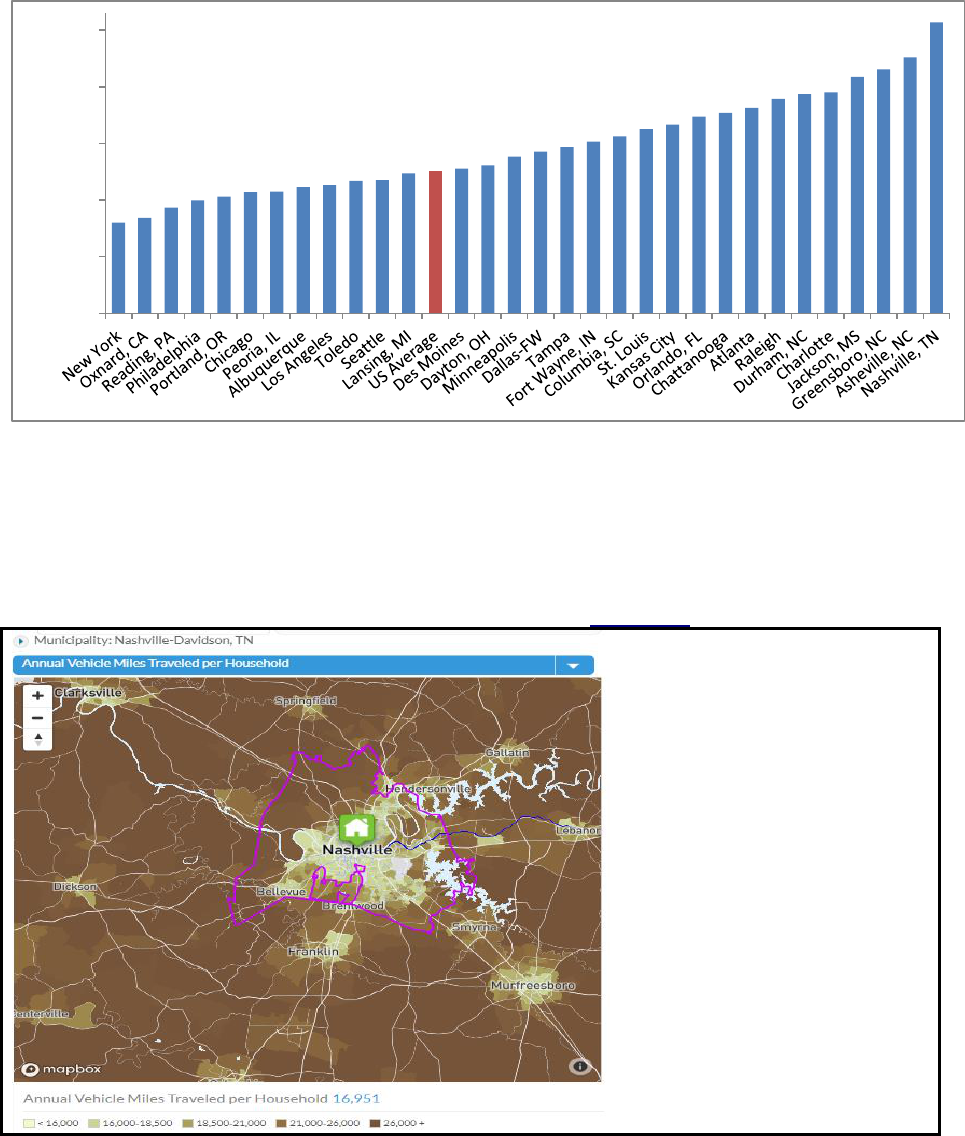
Are Vehicle Travel Reduction Targets Justified?: Why and How to Reduce Excessive Automobile Travel
Victoria Transport Policy Institute
5
Factors Affecting Vehicle Travel
The amount that people drive varies significantly, depending on community design and
transportation policies, as illustrated below.
Figure 2 Per Capita Vehicle-Miles in Selected U.S. Regions (FHWA 2018)
Vehicle travel ranges from less than 20 to more than 40 daily vehicle-miles per capita.
Similar variations occur within regions, as illustrated below. Households located in compact,
walkable neighborhoods drive 30-60% less than comparable families located in auto-dependent
areas. This shows that significant vehicle travel reductions are possible.
Figure 3 Geographic Variation in Household VMT (CNT 2022)
This heatmap shows how
average annual motor vehicle
miles per household vary in a
typical urban region, Nashville,
Tennessee. Households in central
neighborhoods average about
half the amounts in automobile-
dependent, sprawled areas.
This illustrates how compact,
multimodal development can
reduce vehicle travel.
0
10
20
30
40
50
Average Daily VMT Per Capita

Are Vehicle Travel Reduction Targets Justified?: Why and How to Reduce Excessive Automobile Travel
Victoria Transport Policy Institute
6
The table below summarizes factors that affect vehicle travel. This can help identify vehicle
travel reduction strategies. These factors have synergistic effects. For example, transit
improvements may have little effect alone, but cause much larger vehicle travel reductions if
implemented with TDM incentives and compact development policies.
Table 2 Factors Affecting Vehicle Travel (Litman 2021; CARB 2015)
Factor
Definition
Travel Impacts
Demographics
Age, gender, income,
employment and caregiving
responsibilities
Vehicle travel tends to peak at about 50 years of age, is higher
for men than women, increases from low to moderate incomes,
increases with employment and family responsibilities.
Regional
accessibility
and centricity
Location relative to regional
urban center. Portion of jobs in
city centers.
More central area residents typically drive 10-40% less than at
the urban fringe. City center commuters drive less and rely
more on walking, bicycling and public transit.
Density
People or jobs per unit of land
area (acre or hectare).
Reduces vehicle ownership and travel, and increases alternative
modes use. A 10% increase typically reduces VMT 0.5-1%.
Mix
Proximity between activities
(housing, services, jobs, etc.)
Tends to reduce vehicle travel and increase use of non-auto
modes. Mixed-use areas typically have 5-15% less vehicle travel.
Roadway
design
Street scale, design and
management.
Multi-modal street design and lower traffic speed reduce VMT
and increase non-motorized travel.
Quality of
non-auto
travel options
Quantity, quality and safety of
sidewalks, crosswalks, paths,
bike lanes, public transit,
carsharing, and telework.
Improving non-auto modes tends to increase their use and
reduce automobile travel. Multimodal neighborhood residents
tend to own 10-30% fewer vehicles, drive 10-30% fewer miles,
and use non-auto modes more than in auto-oriented areas.
Parking supply
and
management
Number of parking spaces per
building unit or acre, and how
parking is managed and priced.
Tends to reduce vehicle ownership and use, and increase the
use of alternative modes. Cost-recovery pricing (users finance
parking facilities) typically reduces automobile trips 10-30%.
Transportation
prices
Vehicle, fuel, parking and road
prices.
Higher fuel, parking and road prices reduce vehicle travel. Cost
recovery road tolls and parking fees typically reduce affected
vehicle travel 10-30%.
TDM
incentives
Policies and programs that
encourage efficient travel.
Tends to reduce vehicle ownership and use, and increase use of
alternative modes. Impacts vary depending on specific factors.
Convenience
Ease of obtaining information
and using non-auto modes.
If non-auto modes are more convenient their use tends to
increase and auto travel declines.
Perception
Social status of non-auto
modes and urban locations.
Travellers may be more reluctant to use non-auto modes that
are stigmatized or live in neighborhoods considered inferior.
This table describes various factors that can affect travel behavior.
People sometimes assume that vehicle travel reductions are only feasible in dense cities that
have high quality public transit, but some non-auto modes (e-bikes, ridesharing and telework)
are appropriate in suburban and rural areas. Many vehicle travel reduction strategies can be
effective in those communities (Morton, Huegy, and Poros 2014).
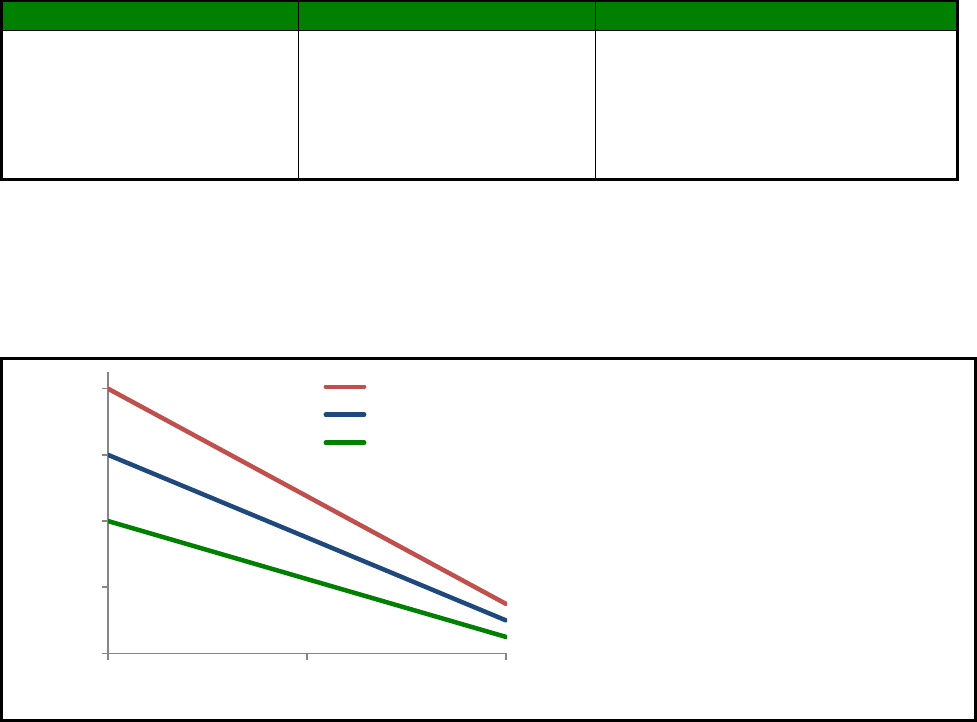
Are Vehicle Travel Reduction Targets Justified?: Why and How to Reduce Excessive Automobile Travel
Victoria Transport Policy Institute
7
How Much Vehicle Travel is Optimal? What Should be Reduced?
This section describes factors to consider when planning for optimal vehicle travel.
Optimizing for Accessibility Rather Than Mobility
Accessibility-based planning recognizes that the ultimate goal is to maximize people’s ability to
access desired services and activities, and that various factors can affect this including mobility
(travel speed and distance), proximity (the closeness of activities), and travel affordability
(Levinson and King 2020). Many planning decisions involve trade-offs between these factors. For
example, wider roads increase automobile traffic speeds but by create barriers to walking,
which reduces non-auto access. Similarly, sprawled development reduces proximity, increasing
the distances people must travel to reach destinations. As a result, an increase in mobility is not
necessarily beneficial, it may reflect a decline in accessibility which forces people to drive more
to reach the services and activities they want. Multimodal planning and compact development
reduce optimal vehicle travel.
Auto and Non-Auto Travel Demands
Some trips are best made by automobile, others by non-auto modes, and many will depend on
planning decisions, as summarized in the table below.
Table 3 Auto and Non-Auto Travel Demands
Optimal Automobile
Either Auto or Non-Auto
Optimal Non-Auto
Travel by people who can drive
and afford a vehicle, when they
carry heavy loads or have diverse
destinations.
Trips with light loads that are less
than five miles in length, or along
heavy-volume travel corridor
with high-quality public transit.
Local policy and planning
decisions affect these factors.
Travel by people who cannot drive or are
financially burdened by vehicle expenses,
who enjoy non-auto travel or value their
health benefits, and travel in dense or
environmentally sensitive areas where
vehicle traffic has high external costs.
Several factors affect which modes are optimal for a particular trip. Many trips could be made by
automobile or non-auto modes, depending on local policy and planning decisions.
Development densities and incomes affect optimal automobile mode shares, as illustrated below.
Figure 4 Optimal Automobile Mode Shares
High levels of automobile travel may be
appropriate in affluent suburban and
rural areas, but should decline as
densities increase and incomes decline.
Automobile mode shares should be less
than 30% in most urban neighborhoods,
and less than 10% in city centers.
Conventional planning ignores these
factors, resulting in more auto-oriented
planning than is fair and efficient in most
communities.
0%
20%
40%
60%
80%
Suburban/Rural Urban
Neighborhood
Downtown
Optimal Auto Mode Shares
Higher income
Moderate income
Lower income
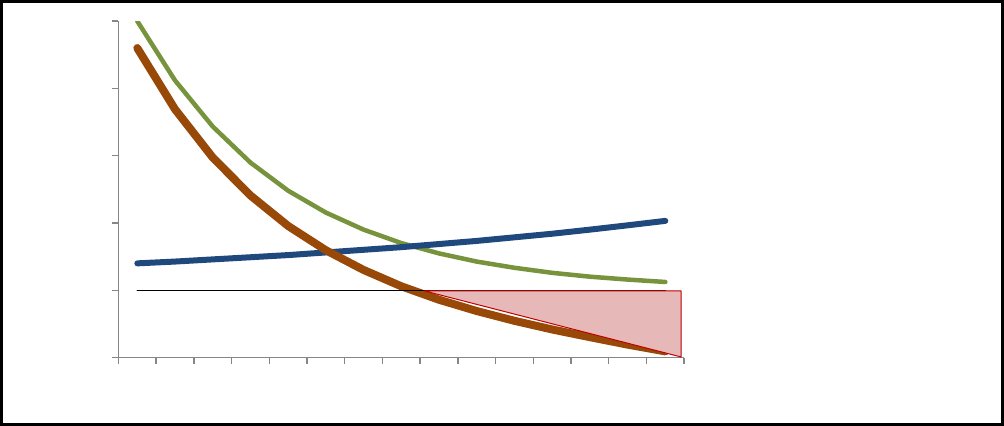
Are Vehicle Travel Reduction Targets Justified?: Why and How to Reduce Excessive Automobile Travel
Victoria Transport Policy Institute
8
Equitable and efficient planning invests in non-auto modes at least as much as their potential
demands, as discussed in more detail later. For example, if 30% of neighborhood trips could be
by walking, bicycling and e-bikes, efficient and equitable planning invests up to 30% of road
space and funding in sidewalks, crosswalks and bikeways, and more if needed to offset decades
of underinvestment, plus TDM incentives to encourage shifts to these modes to help achieve
strategic goals such as reducing traffic and parking congestion, improving public health, and
reducing pollution. Similarly, optimal planning invests in public transit to the degree that it is
cheaper than accommodating more automobile traffic on the same corridor, considering road
and parking infrastructure costs, user costs, plus traffic congestion crash risk and pollution costs.
Economic Analysis
Like most goods, vehicle travel benefits tend to decline marginally since users rationally make
the most beneficial trips first and add lower-value trips as their mobility increases, as illustrated
below. The demand curve has a long-tail, meaning that as driving becomes cheaper people
travel more although their marginal benefits become very small. On the other hand, unit costs
tend to increase as more vehicle travel adds congestion and displaces other modes. As a result,
net benefits (benefits minus costs) tend to decline and can become negative with high annual
mileage, indicated by net benefits below zero. This travel is economically inefficient and
inequitable because it imposes external costs, including infrastructure subsidies, delay, risk and
pollution, and by displacing non-auto modes, reduces non-drivers’ accessibility. A transportation
system can become more equitable and efficient by favoring higher-value trips and more
affordable and efficient modes, over lower-value trips, and expensive, resource-intensive modes.
Figure 5 Vehicle Travel Benefit, Cost and Net Benefit Curves
As vehicle travel increases
marginal benefits tend to
decline since motorists
rationally make the most
beneficial trips first and add
lower value trips as their
driving increases. Costs,
however, tend to increase with
annual mileage due to
increased congestion and
displacement of other modes.
As a result, net benefits
(benefits minus costs) decline
and can become negative at
high annual mileage levels.
As per capita vehicle travel increases so does the justification for policies that improve and
encourage non-auto modes. For example, as vehicle traffic increases in a city so do the costs of
expanding roads and parking facilities, plus crash and pollution costs, justifying more
investments in resource-efficient modes (walking, bicycling and public transit), and TDM
incentives to discourage driving and encourage mode shifts.
Benefits
Costs
Net Benefits
-$1.00
$0.00
$1.00
$2.00
$3.00
$4.00
1 2 3 4 5 6 7 8 9 10 11 12 13 14 15
Benefits and Costs Per Vehicle
-Mile
Annual Vehicle-Mile (Thousands)
Negative Net
Benefits

Are Vehicle Travel Reduction Targets Justified?: Why and How to Reduce Excessive Automobile Travel
Victoria Transport Policy Institute
9
Economic Principles
The following principles can help determine optimal levels of vehicle travel.
1. Consumer Sovereignty
Consumer sovereignty means that planning decisions respond to user demands, including latent
demands. Based on this principle, optimal vehicle travel is the amount people would choose if
they had diverse options. To be efficient and equitable, transportation systems must be diverse
to serve travellers who cannot, should not, or prefer not to drive, as summarized below.
Figure 6 Auto and Non-Auto Travel Demands
In a typical community 20-40% of travellers
cannot, should not, or prefer not to drive,
including people with disabilities and low-
incomes, adolescents, drivers who lack
personal vehicles, and people who prefer
non-auto travel for health and enjoyment.
Auto-oriented planning deprives non-drivers
of independence, forces them to bear
excessive costs, imposes chauffeuring
burdens on motorists, reduces public fitness
and health, and increases traffic problems.
This is unfair and economically inefficient.
Automobile-oriented planning does not simply improve driving, it degrades non-auto travel. For
example, wider roads and high traffic speeds reduce walkability, and since most transit trips
include walking links, this reduces transit access. Parking minimums discourage compact infill
development, reducing the supply of affordable housing in walkable neighborhoods. Consumer
surveys indicate that many households would prefer to live in more compact, multimodal
neighborhoods, drive less, rely more on non-auto modes, and spend less money on
transportation (NAR 2023). Examples described later in this report show that automobile travel
often declines and use of other modes increases after communities improve non-auto modes,
indicating latent demands. Current demographic and economic trends – aging population, rising
fuel prices, changing consumer preferences, increased health and environmental concerns – are
increasing non-auto demands, which indicates that multimodal planning and Smart Growth
development policies are needed to serve future consumer demands.
2. Fair Share Resource Allocation
Basic fairness requires that users receive similar shares of public resources unless there are
specific reasons to do otherwise. For example, if walking currently has 12% mode share (portion
of total trips), at least 12% of infrastructure funding or road space should be devoted to
pedestrian facilities, and more if that would increase pedestrian mode shares, or to achieve
strategic goals such as affordability and public health. Currently, most North American
communities devote much less to non-auto modes than their potential mode shares, as
illustrated in the following figure, indicating that non-auto modes deserve more investment.
No
License
No
vehicle
Low
income
Dislikes driving
Able to drive (but
still benefit from
non-auto options)
Auto
Non-auto
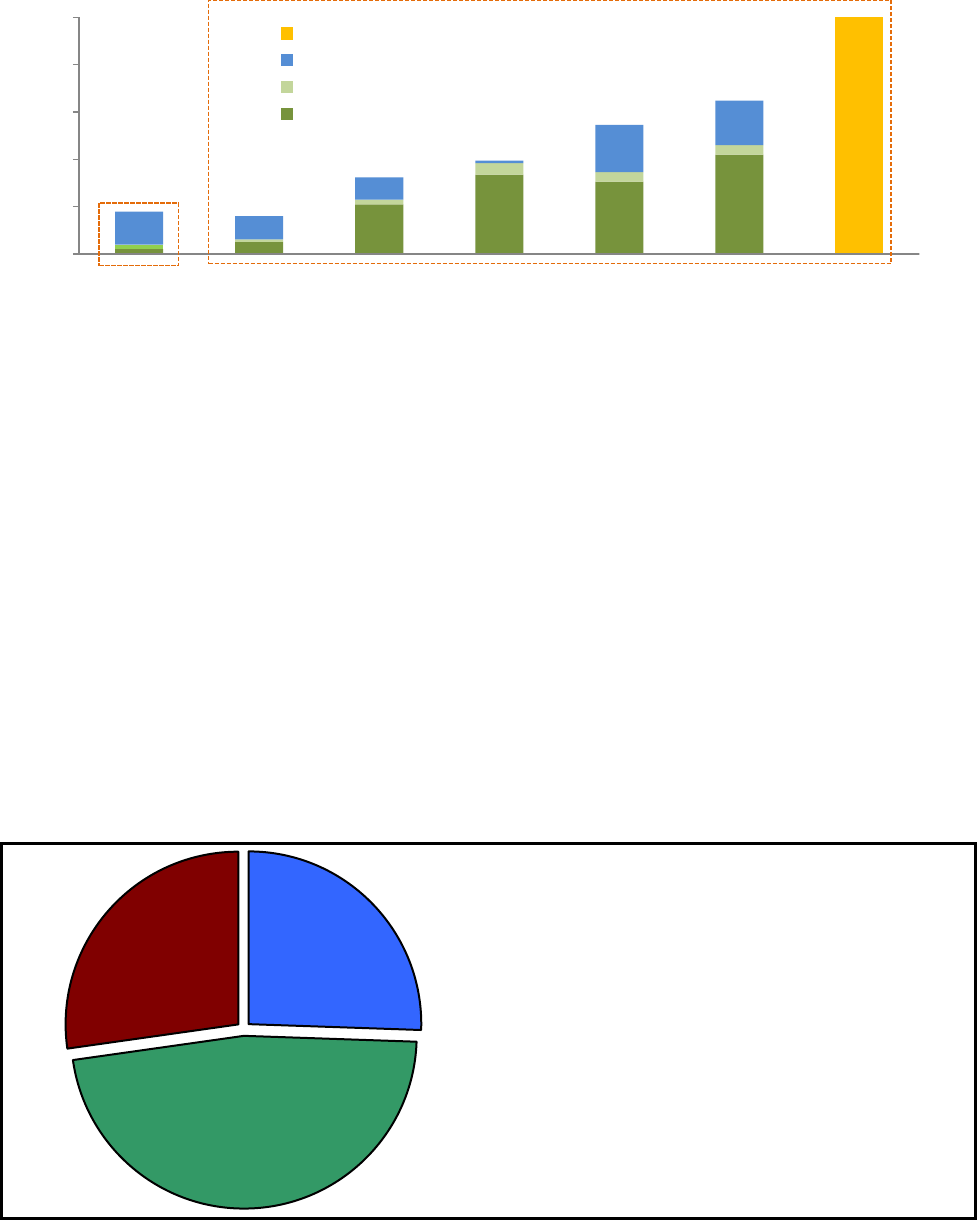
Are Vehicle Travel Reduction Targets Justified?: Why and How to Reduce Excessive Automobile Travel
Victoria Transport Policy Institute
10
Figure 7 Non-auto Spending Versus Demand (Litman 2022)
Non-auto modes receive less than 10% of total transportation infrastructure spending, which is
less than their share of total trips, traffic deaths, potential trips or users.
3. Efficient (“Use Pays”) Pricing
Efficient pricing means that consumers “get what they pay for and pay for what they get,” with
prices that reflect marginal costs. For example, if a vehicle trip imposes $5 worth of costs,
motorists should pay fees of that amount. This ensures that society does not spend $5 worth of
resources for trips that users value less, and prevents non-drivers from subsidizing motorists.
Trips that motorists take if driving is underpriced but forego if charged cost recovery prices are
economically inefficient; their costs exceed their benefits.
Automobile travel is currently underpriced; North American motorists only pay directly about
half of their roadway costs, only a small portion of their parking costs, and are seldom charged
for the congestion, risk and pollution costs they impose (ICF 2021; Litman 2019). In addition,
many user charges, such as vehicle insurance, taxes and registration fees, are fixed, unrelated to
the amount a vehicle is driven, although the costs they represent increase with annual mileage,
so motorists who drive less than average cross-subsidize those who drive more than average.
Figure 8 Vehicle Costs (Litman 2019)
About a quarter of vehicle costs are external (road
and parking costs not paid by user fees, plus
congestion, risk and pollution costs imposed on other
people), and about a quarter are internal-fixed
(vehicle financing, insurance, taxes and registration
fees). This price structure is inefficient and unfair; it
forces people who drive less than average to
subsidize others who drive more than average.
More efficient pricing typically reduces automobile
travel 30-50%, consisting of lower-value trips that
users value less than the total costs they impose.
0%
10%
20%
30%
40%
50%
Infrastructure
Spending
Commute
Trips
Total
Trips
Traffic
Deaths
City
Trips
Potential
Trips
Frequent
Users
At least 3 weekly non-auto trips
Public transit
Bike
Walk
Internal
Fixed
26%
Internal
Variable
47%
External
27%
Demand
Indicators
Supply
Indicator

Are Vehicle Travel Reduction Targets Justified?: Why and How to Reduce Excessive Automobile Travel
Victoria Transport Policy Institute
11
The elasticity of vehicle travel with respect to operating costs is typically about -0.10 in the
short-run and -0.30 over the long-run, so a 10% fee increase reduces vehicle travel about 1.0%
within the first year, and about 3% after a few years (Litman 2014).
Table 4 Efficient Transportation Pricing
Type
Optimal Prices
Travel Impacts
Fuel taxes
Can be a road user fees and an emission fee.
Optimal taxes are $2.00-4.00 per gallon.
If fuel prices average $4.00 per gallon, an
additional $1.00 fuel tax typically reduces
driving 2.5% in the short-run and 7.5% over the
long-run.
Road tolls and
fees
Recover roadway costs, with higher prices
under congested conditions.
Cost-recovery road tolls add about 5¢ per
vehicle-mile, which typically reduce driving 3%
in the short-run and 12% over the long-run,
with larger reductions (typically 20-40%) on
congested roads.
Parking fees
Cost-recovery fees with higher rates during
peak demands. Free parking should be
unbundled, and cashed out.
Cost-recovery parking fees typically add $2-5
per trip, and $5-10 for urban commutes. This
typically reduces affected trips by 10-30%.
Distance-based
fees
Fixed vehicle insurance premiums and
registration fees are prorated by mileage, so
a $600 annual premium becomes 5¢ per mile
and a $1,800 premium becomes 15¢ per mile.
Typically reduces affected vehicle travel by 10-
15%, with larger reductions by higher-risk
drivers (those who pay higher premiums, and so
save more when they drive less), providing
proportionately large crash reductions.
Efficient transportation pricing includes several fees.
These reforms give travellers new opportunities to save money that are not otherwise available.
For example, currently, about half of roadway costs and the majority of parking facility costs are
funded indirectly through general taxes, higher rents and retail prices, so people pay regardless
of how much they drive; paying directly through tolls and user fees reduces these indirect costs,
providing savings to people drive less than average. Parking unbundling (renting it separately
from building space) reduces non-drivers’ rents. Parking cashing out (non-drivers receive cash
equivalent of parking subsidies) gives non-drivers new financial benefits. Distance-based
insurance and registration fees provide financial savings to motorists who drive fewer than
average annual miles.
Efficient pricing could significantly reduce vehicle-travel. For example, road user fees currently
only cover about half of roadway costs; cost-recovery road user fees would add about 5¢ per
vehicle-mile, which would reduce vehicle travel about 5%; cost recovery parking fees typically
reduce driving by 10-30% compared with unpriced parking; a $50 per tonne carbon tax would
add about 50₵ per gallon of gasoline, which would reduce driving about 6%; and distance-based
vehicle insurance could reduce vehicle travel about 10% (CAPCOA 2021). This suggests that
efficient pricing would reduce vehicle travel 30-50% (Butner and Noll 2020; Litman 2014).

Are Vehicle Travel Reduction Targets Justified?: Why and How to Reduce Excessive Automobile Travel
Victoria Transport Policy Institute
12
4. Comprehensive Analysis
A fourth principle is that planning analysis should consider all significant impacts and goals. For
example, when deciding whether to expand a roadway or improving public transit service, the
analysis should consider how they affect strategic goals such as affordability, public fitness and
health, and environmental quality, not just traffic speeds. Current planning often overlooks
important goals and impacts, as indicated in the following table.
Table 5 Impacts Typically Considered in Transportation Planning
Usually Considered
Often Overlooked
• Travel speeds and congestion delays
• Parking convenience
• Vehicle operating costs
• Crash rates
• Pollution emission
• Affordability (savings to lower-income households)
• Independent mobility for non-drivers
• Chauffeuring costs
• Induced vehicle travel
• Public fitness and health
• Barrier effects (delay to non-drivers)
• Sprawl costs (infrastructure costs, habitat loss, etc.)
Conventional transportation project evaluation considers some impacts but often overlooks others.
To the degree that planning overlooks these impacts and goals it tends to overinvest in
automobile infrastructure and underinvest in affordable and resource-efficient modes than is
optimal, resulting in excessive motor vehicle travel (Butner and Noll 2020; Shill 2019). This is
particularly true in cities, where traffic impacts are severe, and in communities that place high
values on affordability, social equity and environmental protection. Optimal automobile mode
shares should decline as densities increase and incomes decline.
5. Accessibility-Based Planning
Accessibility-based planning evaluates transportation system performance based on people’s
ability to reach desired services and activities, taking into account the following factors:
• Mobility. Physical movement and therefore the quality (availability, speed, frequency, comfort,
etc.) of travel modes (walking, bicycling, taxies, public transport, air travel, etc.).
• Geographic proximity. The distances between destinations, and therefore land use development
factors such as development density and mix, which affect these distances.
• Transport system connectivity. The density of sidewalks, roads and public transit networks, and
intermodal connection quality, such as bike access to transit, and transit access to airports.
• Affordability. The financial costs of travel relative to users’ income.
• Convenience. The ease of obtaining travel information, paying fares and carrying luggage.
Such planning should consider trade-offs between different accessibility factors. For example,
wider roads designed to maximize auto traffic speeds tend to create barriers to walking and
bicycling, and compact development tends to reduce traffic speeds but increases proximity and
the efficiency of walking, bicycling and public transit.
This type of planning tends minimize the amount of mobility required to achieve a given level of
accessibility, and so supports vehicle travel reduction policies.

Are Vehicle Travel Reduction Targets Justified?: Why and How to Reduce Excessive Automobile Travel
Victoria Transport Policy Institute
13
Summary
The table below summarizes common planning distortions that violate these principles. These
favor automobile travel over other modes, and sprawl over compact development, resulting in
economically excessive motor vehicle travel.
Table 6 Twelve Common Transportation Planning Distortions
Type of Distortion
Effects
Reforms
Elite bias. Policy makers and planners
favor automobile travel and
undervalue other modes.
Prioritizes automobile travel over other
modes in policy, planning and
investments.
Better analysis, guidance and
tolls for multimodal planning.
Include non-drivers in planning.
Industry influence. The substantial
cultural and political influence by
automobile and petroleum industries.
Increases popular and political support
for policies that increase automobile
ownership and use.
Analysis and control of excessive
industry influence.
Transportation organization goals
and practices. Transport agencies
prioritize roadway planning and give
little consideration to other modes.
Favors roadway expansions over
improvement to other modes, and
provide minimal support for
transportation demand management.
Reform transportation
organizations to be more
comprehensive and multimodal,
and to support TDM programs.
Incomplete non-auto data. Survey
and travel data undercount non-auto
travel activity and demands.
Underinvests in non-auto modes
relative to their demands (including
latent demands) and potential benefits.
More comprehensive travel data,
including latent demands.
Recognize data biases.
Mobility-based performance
indicators (e.g., roadway level-of-
service and travel time index).
Favors faster modes, higher roadway
design speeds, and sprawl over compact
development.
Consider other planning goals
beside speed. Apply accessibility-
based planning.
Biased travel models. Underestimate
elasticities and induced travel.
Overinvests in roadway expansions and
underinvests in alternatives.
Account for induced vehicle
traffic in planning analysis.
Incomplete impact analysis.
Conventional planning tends to
overvalue speed and undervalue
other community goals.
Favors faster modes and higher road
design speeds over slower but more
affordable, inclusive and efficient
options
More comprehensive impact
analysis, additional performance
targets and more multimodal
planning.
Dedicated road and parking funds,
but not for other modes.
Favors automobile infrastructure over
investments in other modes.
Least-cost transportation
planning. Multimodal planning.
Non-auto underinvestment. Walking,
bicycling and transit receive less than
optimal funding and road space.
Makes walking, bicycling and public
transit inconvenient, unsafe and
expensive, reducing their use.
Multimodal planning. Targets for
improving non-auto modes and
increasing their use.
Automobile underpricing (unpriced
roads, parking, risk, pollution, etc.)
Increases automobile travel and reduces
non-auto travel demands.
More efficient pricing and more
investments in non-auto modes.
Parking minimums. Local mandates
for off-street parking.
Increases automobile ownership and
use, degrades walking conditions, and
encourages sprawled development.
Reduce or eliminate parking
mandates. More efficient parking
management.
Sprawl-oriented development
policies. Density restrictions and
parking minimums.
Creates dispersed communities that
increase travel distances and provide
poor non-auto access.
Smart Growth policies that create
more compact, multimodal
communities.
Many common planning distortions favor automobile travel and sprawl over more affordable,
inclusive and efficient modes, and sprawl over compact, multimodal development.

Are Vehicle Travel Reduction Targets Justified?: Why and How to Reduce Excessive Automobile Travel
Victoria Transport Policy Institute
14
Vehicle Travel Reduction Strategies
Various strategies can increase transportation system efficiency and reduce vehicle travel
(NCDOT 2021; TfA and SGA 2020; TTI 2022). The following table lists examples.
Table 7 Vehicle Travel Reduction Strategies (ICAT 2020; ITF 2022; VTPI 2020)
Improve Options
TDM Incentives
Smart Growth Policies
Programs
Transit improvements
Walking and cycling
improvements
Rideshare programs
Flextime
Telework
Carsharing
Road space reallocation
Congestion pricing
Distance-based fees
Parking cash out
Parking pricing
Fuel or carbon tax
increases
Complete streets
Smart growth/New urbanism
Transit oriented
development
Parking management
VMT developer fees
Car-free planning
Commute trip reduction
programs
School and campus
transport management
Freight transport
management
TDM marketing
Various strategies can help reduce vehicle travel. These tend to have synergistic effects, so the most
effective programs include a combination of positive and negative incentives to reduce driving.
Many of these strategies reflect the economic principles described earlier. For example,
improving non-auto travel options, and Smart Growth policies that improve housing options in
multimodal neighborhoods, reflect consumer sovereignty and fair share planning. Many TDM
incentives reflect efficient pricing. Many of these strategies help achieve multiple community
goals and so are justified by comprehensive planning.
New tools, such as California’s Vehicle Miles Traveled-Focused Transportation Impact Study
Guide (Caltrans 2020), and the San Francisco TDM Tool (www.sftdmtool.org), predict how
policies and programs affect vehicle travel, and how to achieve VMT reduction targets. The
Brooking Institute’s Building for Proximity (Tomer and George 2023), and GreenTRIP Connect
(connect.greentrip.org) calculate how location and development policies can reduce driving,
parking facility costs and emissions. The Cool Climate Network (coolclimate.berkeley.edu)
produces interactive heat maps showing where infill development can reduce household
emissions. Many jurisdictions are starting to use these tools to plan vehicle travel reduction
programs (Bellis 2021; DeGood and Zonta 2022). Some proposed road building projects have
been halted or revised to avoid increasing traffic and emissions (Morris 2023).
Vehicle travel reduction programs tend to be most effective if implemented as an integrated
program that includes both positive and negative incentives (STTI 2018). Various examples
described later in this report indicate that cost-effective programs can typically reduce affected
vehicle travel by 5-15% if they only include positive incentives (improved travel options and
encouragement campaigns); 10-30% if they include financial incentives (cost recovery road tolls
and parking fees, and distance-based insurance pricing), and 20-60% if they also include Smart
Growth development policies (upzoning, infill and reduced parking minimums).

Are Vehicle Travel Reduction Targets Justified?: Why and How to Reduce Excessive Automobile Travel
Victoria Transport Policy Institute
15
The following table summarizes the impact of various vehicle travel reduction strategies. They
tend to become more effective and beneficial if implemented as an integrated program.
Table 8 Travel Reduction Impacts (CARB 2015, Kuss & Nicholas 2022, VTPI 2020)
Strategy
Description
Typical Travel Impacts
Efficient parking pricing
and management
Charge cost-recovery parking fees with rates
that vary by demand. Cash out and unbundle
parking. Eliminate parking mandates.
5-15% reduction in vehicle ownership and
10-30% reduction in affected vehicle trips.
Active and micro
modes (walking,
bicycling, e-bikes and
variants)
Improve walking and bicycling conditions, and
encourage their use. Include e-bikes in
electric vehicle subsidy programs. Create
compact 15-minute neighborhoods.
Infrastructure improvements increase
active and micro mode travel 50-100% and
reduce driving 5-15%. Compact, walkable
communities reduce driving 20-40%.
High quality public
transit
Frequent, fast, convenient, comfortable
transit services. Amenities such as free wifi
and improved payment systems.
Service improvements increase affected
transit travel 20-50%, and reduce auto
travel 5-15%, and sometimes more.
Smart Growth, New
Urbanism, Transit-
oriented development
Develop compact, mixed-use neighborhoods
around high quality public transit.
Residents tend to walk, bike and use public
transit 20-100% more, and drive 20-60%
fewer annual miles.
Commute, school and
campus transport
management programs
Improve non-auto travel options and
encourage their use with financial incentives
(parking pricing and cash out).
Programs that only use persuasion reduce
driving 5-15%, those that provide financial
incentives reduce auto trips 10-30%.
Roadway redesigns to
favor sustainable
modes
Improve sidewalks, add bike- and bus lanes,
and reduce traffic speeds. Apply complete
streets policies
Non-auto travel typically increases 20-
100%, and auto travel declines 10-30%.
Reducing traffic speeds reduces VMT.
Efficient road pricing
Motorists pay cost-recovery tolls on urban
highways and fees to enter city centers
10-30% reduction in affected road traffic
volumes.
Distance-based pricing
Vehicle insurance and registration fees are
prorated by average annual mileage.
Up to 15% if total insurance premiums and
registration fees are prorated.
Vehicle sharing
Provide car- and bikesharing services in urban
neighborhoods.
12-15 private cars replaced by each shared
car.
Freight transport
management
Require or encourage shippers to use
efficient vehicles and logistics.
Can reduce freight vehicle travel and
emissions 10-30%.
Limited traffic zone
Limit vehicle trips to central city areas.
10-20% reduction in city-centre cars.
Personalized travel
planning
Residents encouraged to use non-auto
modes. Transit fare discounts.
6-12% reduction in car use by participants.
Sustainable mobility
apps
Mobile apps provide user information,
payments and rewards for reduced driving.
73% of app users reduce their vehicle
travel.
There are many ways to reduce driving and increase non-auto travel. Impacts vary depending on design and
conditions. They tend to have synergistic effects: they become more effective if implemented as integrated
programs that include non-auto improvements, TDM incentives and Smart Growth development policies.

Are Vehicle Travel Reduction Targets Justified?: Why and How to Reduce Excessive Automobile Travel
Victoria Transport Policy Institute
16
Potential Savings and Benefits
This section describes potential vehicle travel reduction benefits.
Because motor vehicles are large, heavy and fast they are more expensive to use, require more
costly infrastructure (roads, parking facilities and traffic services), and impose more external
costs (congestion, risk and pollution) than most other modes when measured per mile. Since
motorists tend to travel more annual miles than non-drivers they usually have higher annual
costs (Litman 2019). Similarly, sprawled development consumes more land, requires more costly
infrastructure, and by increasing travel distances increases transportation costs.
Vehicle travel reduction strategies and Smart Growth development can reduce these costs,
providing various benefits (Ahlfeldt and Pietrostefani 2017; Ewing and Hamidi 2014). They also
impose various costs. The table below summarizes these impacts, categorized according to their
travel impacts.
Table 9 Multimodal Planning Benefits and Costs
Improve
Non-Auto Travel
Increase
Non-Auto Travel
Reduce
Automobile Travel
More Compact
Communities
Benefits
• Improved user
convenience, comfort
and safety.
• Improved accessibility
for non-drivers, which
supports equity
objectives.
• Higher property values
along walk-, bike- and
busways.
• Improved public realm
(more attractive
streets).
• User enjoyment.
• Improved public fitness
and health.
• More local economic
activity.
• Increased community
cohesion (positive
interactions among
neighbors).
• More neighborhood
security (“eyes on the
street”).
• Reduced traffic
congestion.
• Road and parking facility
cost savings.
• Consumer savings.
• Reduced chauffeuring
burdens.
• Increased traffic safety.
• Energy conservation.
• Pollution reductions.
• Economic development.
• Improved accessibility,
particularly for non-
drivers.
• Transportation cost
savings.
• Reduced sprawl costs.
• Openspace
preservation.
• More livable
communities.
• Higher property values
Costs
• Facility costs.
• Lower traffic speeds.
• Equipment costs and
transit subsidies.
• User crash risks.
• Slower travel.
• Increases some
development costs.
Improving non-auto modes has various benefits and costs.
These impacts vary. Not every vehicle travel reduction program provides all of these benefits,
but most provide many. Vehicle travel reduction and Smart Growth policies tend to help achieve
social equity goals: they improve mobility and accessibility for physically and economically
disadvantaged groups, ensure that non-drivers receive their fair share of infrastructure
investments, increase affordability, and reduce external costs (congestion, risk and pollution)
that motor vehicles impose on other people.

Are Vehicle Travel Reduction Targets Justified?: Why and How to Reduce Excessive Automobile Travel
Victoria Transport Policy Institute
17
Examples
Below are examples of successful vehicle travel reduction programs. For more information see
“TDM Success Stories” (www.vtpi.org/tdmss.pdf) and “Tools of Change” (www.toolsofchange.com).
Active Transportation Improvements
Many studies find that walking and bicycling improvements can significantly increase use of
these modes (CPSTF 2017). For example, after the Federal Highway Administration’s four-year
Nonmotorized Transportation Pilot Program invested about $100 per capita in pedestrian and
bicycling improvements in four typical communities (Columbia, MO; Marin County, CA;
Minneapolis area, MN; and Sheboygan County, WI), walking trips increased 23%, bicycling trips
increased 48%, and automobile travel declined 3% (FHWA 2014).
A recent U.S. study found that a 10% increase in per capita bikeway-miles increases bicycle
commute mode shares 2.5%, and a 10% increase in protected bicycle lanes increases bicycle
mode shares 4% (Yang, et al. 2021). Cities with extensive active mode networks, such has Davis,
California; Eugene, Oregon; and Boulder, Colorado have more than 15% active commute mode
shares, five times the national average, plus under 20 daily vehicle miles travelled per capita, 20%
less than the national average (Buehler 2016).
TDM Program Effectiveness
The article, Don’t Underestimate Your Property: Forecasting Trips and Managing Density over the
Long Term (Galdes and Schor 2022) summarizes experience with TDM programs in suburban Fairfax
County, particularly Tyson’s Corner. It found that residential and commercial developments that had
comprehensive but cost-effective TDM programs actually generate 49% fewer trips than predicted
by ITE trip generation models. This reduces parking and roadway costs, and allows more
development to occur on available land. As one traffic engineer explained,
“Underestimating trip generation can have deleterious effects on a neighborhood because trip
generation is so closely linked to the amount of square footage that a property is allowed. More
than any other feature of a development, vehicle trip generation estimates determine density
limits and impacts.” (Mike Workosky, traffic engineer and President of Wells + Associates)
Similarly, a detailed study, Travel Demand Management: An Analysis of the Effectiveness of TDM
Plans in Reducing Traffic and Parking (Spack and Finkelstein 2014) measured trip generation at
various office buildings in the Minneapolis-St. Paul metropolitan region. It found that, compared
with Institute of Transportation Engineers’ average trip generation rates, office buildings that
implemented TDM Plans generate, on average, 34% to 37% less traffic and need 17% to 24%
fewer on-site parking spaces.
Regional Vehicle Travel Reduction Programs
Some North American urban regions have implemented integrated vehicle travel reduction
programs that significantly reduce per capita vehicle travel. For example, during the last two
decades the city of Portland shifted highway expansion funding to improve regional bus and rail
transit services, implemented TDM programs, reformed its parking policies, and implemented
Smart Growth policies that encourage more compact development. As a result, per capita
vehicle travel declined in that region while it increased nationally, resulting in average per capita
vehicle travel nearly 30% lower than the U.S. average, as illustrated in the following graph.
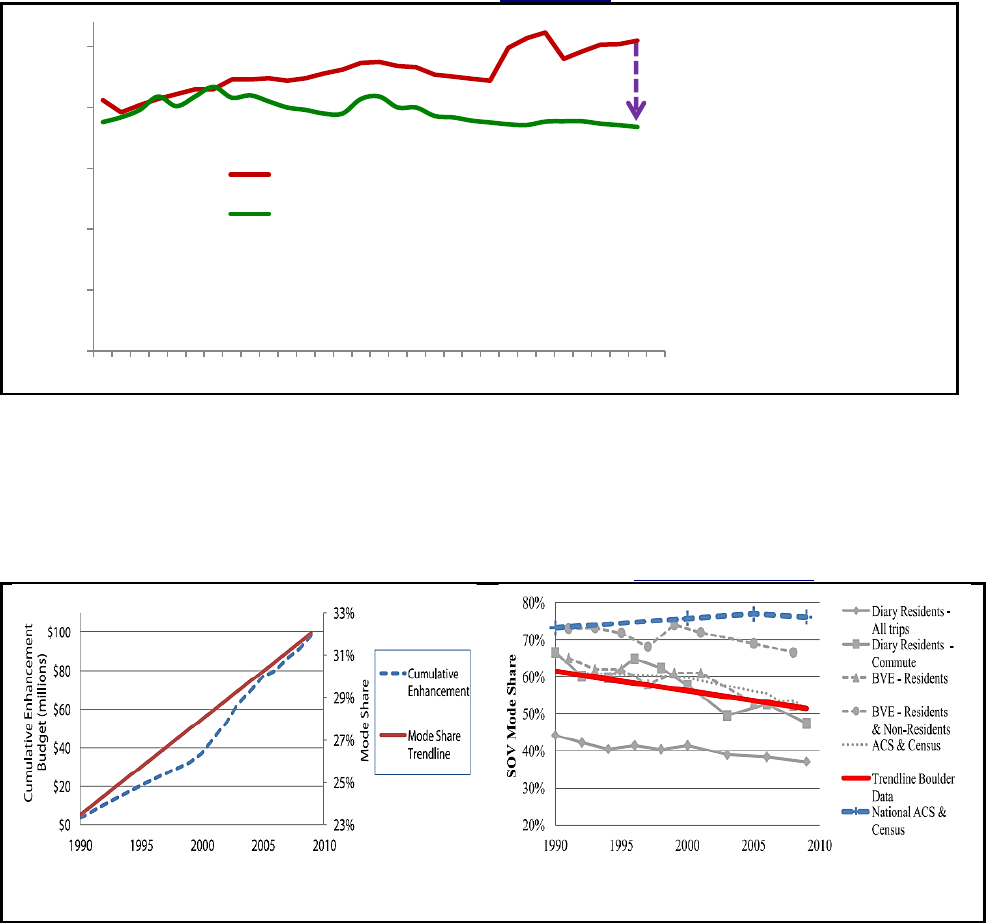
Are Vehicle Travel Reduction Targets Justified?: Why and How to Reduce Excessive Automobile Travel
Victoria Transport Policy Institute
18
Figure 9 Portland, Oregon Travel Trends (Metro 2021)
Portland, Oregon’s
integrated TDM and
Smart Growth policies
reduced average vehicle
travel in both the city and
its urban region (which
includes the Vancouver,
Washington suburb),
while driving increased
elsewhere in the U.S.
Similarly, after Boulder, Colorado increased non-auto mode investments to about $100 annually
per capita, use of those modes increased, and automobile mode share declined from 62% to
52%, as illustrated below.
Figure 10 Non-Auto Funding and Mode Share, Boulder (Henao, et al. 2015)
After Boulder increased non-auto investments to about $100 annual per capita (left) their mode shares
increased to about a third of all trips and single occupant vehicle (SOV) shares declined about 17%.
California SB 743
California has targets and plans to achieve carbon neutrality by 2045, in part by reducing per
capita light-duty vehicle travel 25% by 2030 and 30% by 2045. To achieve these targets
California law requires that transportation projects be evaluated based on their vehicle travel
impacts (Lee and Handy 2018). Although some organizations continue to expand roadways
(NextGen 2023), the California State Transportation Agency (CalSTA 2021) and the California Air
Pollution Control Association (CAPCOA 2021) developed guidelines for applying these policies to
planning decisions.
0
5
10
15
20
25
1990 1995 2000 2005 2010 2015 2020
Annual Vehicle
-Miles Per Capita
U.S. Average
Portland

Are Vehicle Travel Reduction Targets Justified?: Why and How to Reduce Excessive Automobile Travel
Victoria Transport Policy Institute
19
Campus Transportation Management Programs
Many colleges and universities are implementing transportation demand management
programs in order to reduce traffic and parking problems, increase affordability and better serve
students, staff and visitors. These usually include a combination of active and public transit
service improvements, u-pass (the campus purchases highly-discounted transit service for all
students), efficient parking pricing, bike- and car-sharing, and more accessible campus design.
These typically reduce automobile trips to campus by 20-50%.
For example, Stanford University implemented its comprehensive TDM program in an
agreement with the local government to eliminate the requirement for traffic impact studies
and mitigation for campus development (more classrooms, laboratories, research institutes and
housing) provided there is no net increase in total vehicle trips. As a result drive alone rates
declined from 72% to 46% for staff, and just 39% for total commuters, including students, drive.
This allowed construction of millions of square feet of additional building space that
accommodate more students and staff without expanding roads and parking facilities.
Scottish Planning Rules (BBC 2023)
Scotland established new planning rules intended to support “transformational reduction in
private car use” by creating “20-minute neighbourhoods” where all services are within walking
or bicycling distance, improving public transit services, and reducing out-of-town shopping malls
and drive-throughs. This will help achieve national targets to reduce car trips 20% by 2023.
Rural Community Multimodal Planning (Lynott 2014)
Some rural communities are implementing multimodal planning to improve affordable and
healthy travel options and help reduce vehicle-travel. For example, Washington State’s Rural
Mobility Grant Program and a Travel Washington Intercity Bus Program supports public transit
services in rural counties. As a result, it is possible to travel around the Olympic Peninsula using
the Olympic Transit Loop, which consists of six coordinated local public transit agencies.
European Sustainable Urban Mobility Plans (Eltis 2021 and EU 2021)
The European Union’s new Urban Mobility Framework requires municipal governments to
develop Sustainable Urban Mobility Plans (SUMPs) by 2025 (EU 2021). This is intended to help
solve air pollution, congestion, accessibility, traffic safety, growth of e-commerce, and other
urban mobility challenges. SUMPs are multifaceted and tailored to each region’s unique needs
and abilities. They typically include a combination of active and public transport improvements,
roadway and parking design changes, efficient road and parking pricing, development policy
reforms, regulatory reforms, improved data collection and program evaluation, and mobility
management programs to improve both personal and freight transport efficiency.
To support these plans, the European Union sponsors the Urban Mobility Observatory, managed
by Eltis, a network of research organizations that provides extensive, practical guidance on
SUMP development (Eltis 2021). These resources include the Planner's Guide to Sustainable
Urban Mobility Management (SUMP) a Toolbox for Mobility Management, and the Eltis Case
Study Database which describes in detail numerous, diverse examples from the European Local
Transport Information Service. Eltis also provides tailored training on all aspects of the SUMP
process and its implementation, improved data collection and evaluation tools, and financial
support for implementing and testing innovation.
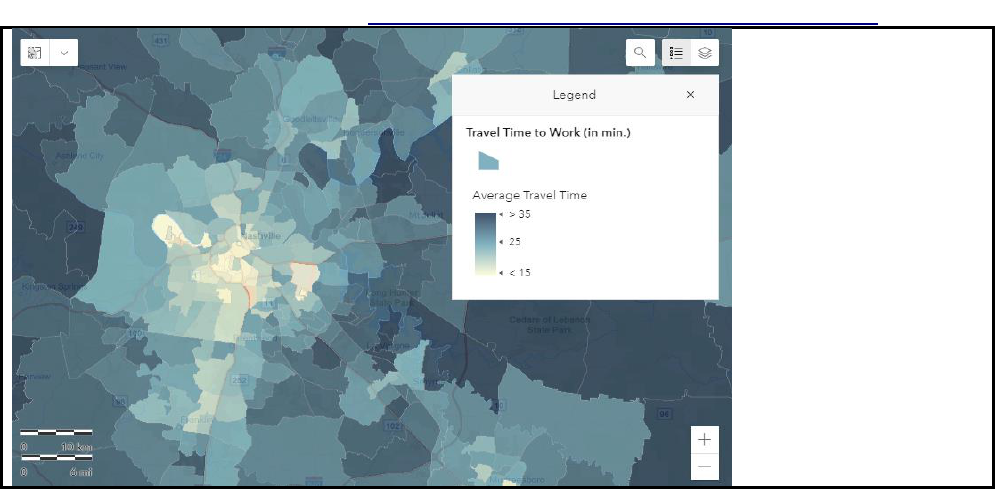
Are Vehicle Travel Reduction Targets Justified?: Why and How to Reduce Excessive Automobile Travel
Victoria Transport Policy Institute
20
Evaluating Criticisms
This section evaluates various criticisms of vehicle travel reduction targets and programs.
Reduces Transportation Efficiency
Critics argue that, because automobiles are faster than other modes, auto-oriented planning
benefits everybody, including non-drivers who travel as automobile passengers and use goods
delivered by motor vehicles. To justify automobile-oriented planning critics cite examples of
high-value automobile trips, such as travellers with disabilities, workers who truck heavy
materials and tools to job sites, and commutes that would be slow and difficult by non-auto
modes. However, this argument is a non sequitur: the fact that automobiles are most efficient
for some trips does not mean that they are best for all trips, or that vehicle travel cannot be
efficiently reduced.
Compact, multimodal community residents spend less total time and money on transportation
than in automobile-dependent, sprawled areas, as illustrated below. Much of the time savings
provided by automobile travel is offset by the additional working hours required to own and
operate a vehicle. When measured as effective speed (defined as travel distance divided by time
spent travelling plus time spent earning money to pay travel expenses), non-auto travel is often
faster than driving, particularly for lower-income workers (Tranter 2010). The study, “Urban
Access Across the Globe: An International Comparison” (Wu, et al. 2021) found that U.S. urban
regions have less access than in other countries due to automobile dependency and sprawl.
Figure 11 Commute Duration (Mineta Institute Commute Duration Mapping System)
Average commute
duration (minutes per
commute) are generally
much lower in compact,
multimodal
neighborhoods than in
automobile-dependent,
sprawled areas, due to
better accessibility.
This figure shows
Nashville, Tennessee,
using US Census Data.
Similar patterns are seen
in most cities.
Vehicle travel reduction strategies can increase automobile travel efficiency by reducing traffic
and parking congestion, and reduce chauffeuring burdens. In automobile-dependent areas
about 15% of trips are made to chauffeur a non-driver. These are particularly inefficient because
they often involve an empty backhaul, so a five mile trip generates ten vehicle-miles and
requires twenty minutes of driving.
Nashville

Are Vehicle Travel Reduction Targets Justified?: Why and How to Reduce Excessive Automobile Travel
Victoria Transport Policy Institute
21
Harms Disadvantaged Groups
Critics argue that because some people with disabilities and low incomes use motor vehicles,
vehicle travel reduction policies harm disadvantaged groups. This is generally untrue. Most
vehicle travel reduction strategies benefit disadvantaged groups, and vehicle travel programs
can be designed to support equity goals. The table below summarizes these effects.
Table 10 Vehicle Travel Reduction Strategies: Distribution of Impacts
Non-drivers
Low-Income Drivers
High-Income Drivers
Benefit
Active and micro mode improvements
Transit and ridesharing improvements
Flextime and telework
Smart Growth (affordable infill)
Parking unbundling & cash out
Road tolls and fuel taxes
Smart Growth (affordable infill)
Flextime and telework
Carsharing
Distance-based fees
Parking cash out
Flextime and telework
Parking management
Parking fees
Road tolls & congestion pricing
Harm
ed
Reduced travel as a vehicle passenger.
Fuel or carbon tax increases*
Parking fees*
Road tolls *
Road space reallocation
Road space reallocation that
reduces traffic capacity
Non-drivers and lower-income drivers benefit from strategies that improve non-auto modes, create more
accessible communities or reduce the external costs that motorists impose on other people. Higher prices
(indicated by *) burden low income drivers but their overall impacts depend on how there are structured,
how revenues are used and the quality of alternatives.
Disadvantaged groups tend to benefit from strategies that improve affordable modes and
affordable housing options, or reduce traffic external costs. Parking cash out (non-drivers
receive the cash equivalent of parking subsidies provided to motorists) and parking unbundling
(parking is rented separately from housing) are particularly progressive since they provide large
financial benefits to non-drivers. Increasing fuel taxes, parking fees and road tolls can harm
motorists directly but their overall impacts depend on how they are structured; if they include
discounts for lower-income travellers, or revenues are invested in affordable modes or used to
reduce regressive taxes, they can benefit low-income households overall.
Critics claim that disadvantaged workers earn more if they have an automobile (Pisarski 2009),
but their additional income is usually less than their additional expenses, making them
financially worse off overall. For example, Smart and Klein (2015) found that formerly carless
households that obtain a car typical earn about $2,300 more annually but must spend an
additional $4,100 on their vehicles. Automobile travel also increases risk and health problems
(Lens 2021). As a result, disadvantaged communities tend to benefit more from non-auto
improvements than from vehicle subsidies (CTS 2010; Gao and Johnston 2009). Disadvantaged
groups can benefit from efficient road tolls since they seldom drive under congested conditions
and bear external traffic costs (Manville and Goldman 2018).
This indicates that most disadvantaged people benefit overall from vehicle travel reduction
strategies that improve affordable modes, provide financial savings to non-drivers, create more
compact, multimodal communities and reduce external costs. Any equity concerns can be
addressed by providing need-based discounts (Alexander, Alfonzo and Lee 2021).
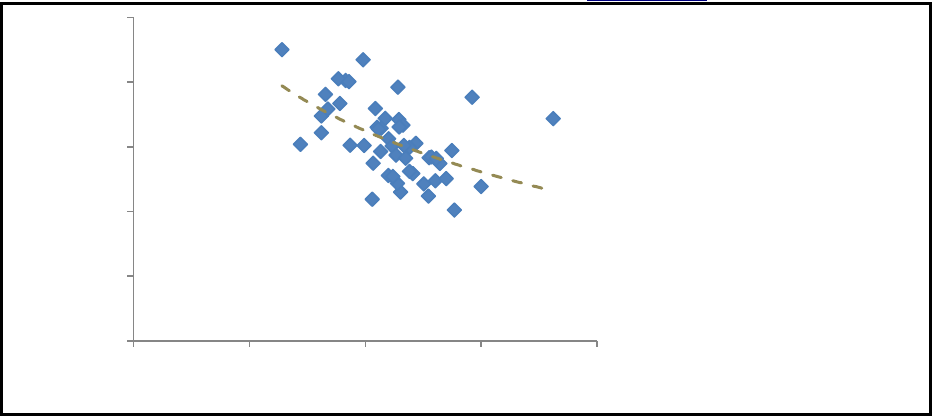
Are Vehicle Travel Reduction Targets Justified?: Why and How to Reduce Excessive Automobile Travel
Victoria Transport Policy Institute
22
Harms the Economy
Critics sometimes argue that because most economic activities involve motor vehicle travel,
vehicle travel reductions reduce economic productivity (Pozdena 2009). That is generally untrue.
Although vehicle travel supports economic activities it also imposes large costs. Vehicle travel
reduction strategies that increase transportation system efficiency provide economic benefits.
For example, TDM incentives that reduce congestion delays and favor commercial and public
transit vehicles tend to increase productivity. Efficient parking management can reduce
development costs. Non-auto travel improvements can improve workers’ access to jobs and the
pool of workers available to businesses (Wu, et al. 2021). Businesses tend to be more productive
in denser urban areas due to agglomeration efficiencies (Melo, Graham and Noland 2009).
Research indicates that increases from very low to moderate levels of mobility tend to increase
economic productivity, but beyond an optimal level (typically about 5,000 annual vehicle-miles
per capita, depending on conditions) additional vehicle travel reduces productivity (DOE 2021;
Ecola and Wach 2012; Kooshian and Winkelman 2011; McMullen and Eckstein 2011; Ecola and
Wachs 2012). This makes sense since marginal benefits tend to decline while costs tend to
increase at high levels of mobility, as described in Figure 6. Within developed countries there
tends to be a negative relationship between vehicle travel and economic productivity (Zheng, et
al. 2011), as illustrated below.
Figure 12 Per Capita GDP and VMT for U.S. States (FHWA 2019)
Per capita economic
productivity tends to
increase as vehicle travel
declines. (Each dot is a U.S.
state.)
This suggests that more
compact and multimodal
urban regions tend to be
more economically
productive than sprawled,
automobile dependent
regions.
This indicates that vehicle travel reduction strategies with well-designed vehicle travel reduction
programs that reflect economic principles are likely to increase productivity, employment,
property values and tax revenues.
R² = 0.2702
$0
$20,000
$40,000
$60,000
$80,000
$100,000
0 5,000 10,000 15,000 20,000
2019 GDP Per Capita
2019 VMT Per Capita
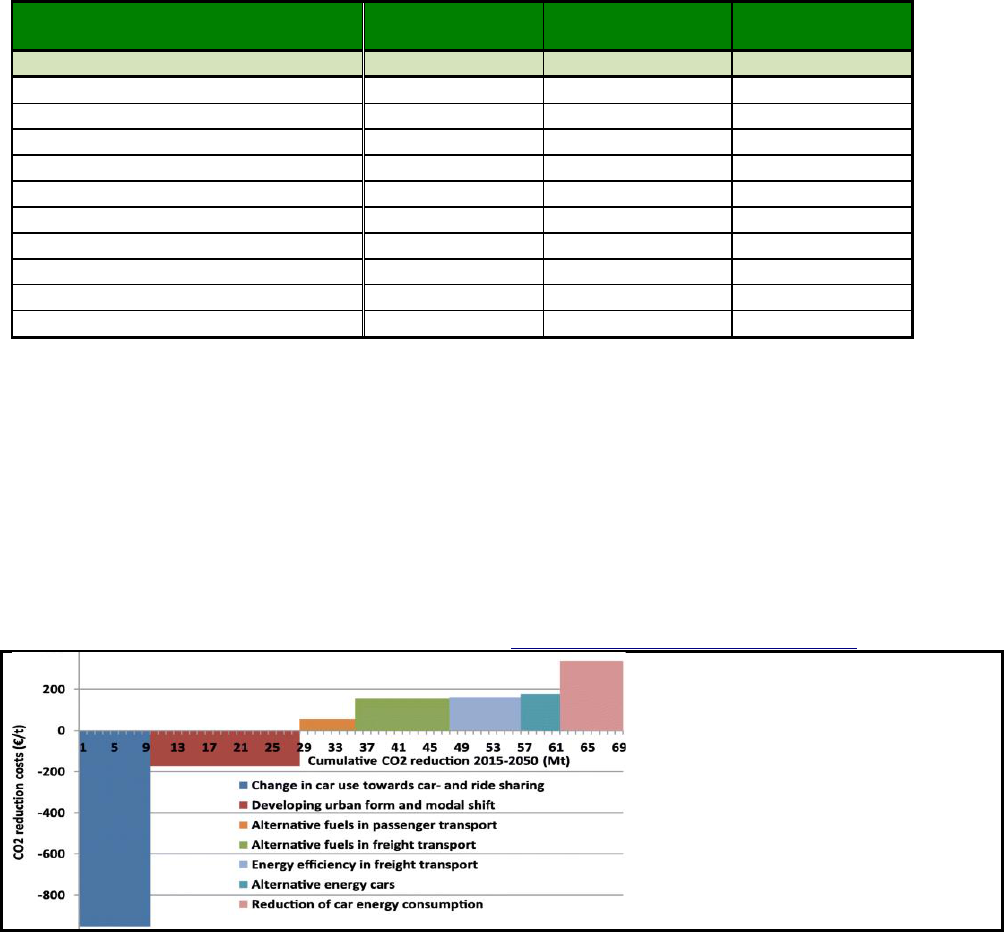
Are Vehicle Travel Reduction Targets Justified?: Why and How to Reduce Excessive Automobile Travel
Victoria Transport Policy Institute
23
Cost Efficiency
Critics argue that vehicle travel reduction programs are less efficient at achieving specific goals,
such as congestion or emission reductions, than engineering solutions such as road expansions
and clean (efficient and alternative fuel) vehicles (Poole 2009). This may be true if goals are
considered individually, but engineering solutions tend to induce additional vehicle travel which
exacerbates other problems (Moshiri and Aliyev 2017). The table below compares various
transportation improvement strategies: Roadway expansions can reduce congestion, and clean
vehicles help conserve fossil fuel and reduce pollution, but by inducing more vehicle travel they
contradict other objectives. Vehicle travel reduction programs help achieve many planning
objectives and so tend to be most cost-effective overall (Alarfaj, Griffin and Samaras 2021).
Table 11 Comparing Impacts
Planning
Objectives
Roadway
Expansions
Efficient and Alt.
Fuel Vehicles
TDM and Smart
Growth
Vehicle Travel Impacts
Increased
Increased
Reduced
Congestion reduction
Roadway cost savings
Parking cost savings
Consumer savings and affordability
Mixed
Traffic safety
Independent mobility for non-drivers
Fossil fuel conservation
Pollution reduction
Physical fitness and health
Efficient development (reduced sprawl)
(
= Achieve objectives.
= Contradicts objective.) Roadway expansions can reduce congestion and
clean vehicles can conserve fossil fuel and reduce pollution, but by inducing more vehicle travel they
contradict other objectives. TDM and Smart Growth strategies help achieve all objectives.
For example, studies that calculate emission reduction cost efficiency find that engineering
strategies, such as more efficient and alternative energy cars, are relatively expensive, while
vehicle travel reduction strategies often have negative costs due to their co-benefits (Farbes,
Haley and Jones 2021), as illustrated below. Vehicle travel reductions strategies are cost
effective and necessary for achieving emission reduction goals (McCahill 2021).
Figure 13 Emission Abatement Cost Curve (Liimatainen, Pöllänen and Viri 2018)
This study found that vehicle travel
reduction strategies, such as car- and
ride-sharing and compact urban form,
have negative costs (they provide net
savings, indicated by costs below zero)
due to their large co-benefits, while
alternative fuels and energy efficient
cars tend to have relatively high costs,
over 100€ per tonne.

Are Vehicle Travel Reduction Targets Justified?: Why and How to Reduce Excessive Automobile Travel
Victoria Transport Policy Institute
24
Road User Fee “Diversions” Are Unfair to Motorists
Critics argue that it is unfair to use road user fees, such as fuel taxes and road tolls, to finance
non-auto modes, which they call these diversions (Feigenbaum and Hillman 2020). However,
user fees only cover about half of roadway costs and a smaller portion of government-mandated
parking facilities; the rest is financed in ways that residents pay regardless of how they travel. If
it is unfair for motorists to fund non-auto infrastructure it is more unfair for non-drivers to fund
automobile infrastructure (Litman 2022). The OECD report, Distributional Effects of Urban
Transport Policies to Discourage Car Use (Lindsey, Tikoudis and Hassett 2023) concludes that
vehicle travel reduction policies can benefit disadvantaged groups in many ways, and can be
designed to support social equity goals.
All Travel Imposes External Costs
Critics argue that all travel imposes external costs, so it is unfair to focus on automobile external
costs (O’Toole 2019), but their analysis is faulty (Walker 2016). Critics only consider a limited set
of costs, and measure them per mile, which ignores the higher costs resulting from motorists’
higher annual mileage. Walking and bicycling have low external costs. Transit has higher costs
and subsidies but operates in dense urban areas where automobile costs are particularly high,
and is generally less costly than providing taxi service for non-drivers. In most situations,
automobile external costs are higher than other modes per mile, and since motorists travel
more per year their per capita annual external costs are generally much higher than for non-
drivers (Gössling, et al. 2018; Litman 2019; Schröder, et al. 2022).
Reduces Freedom
Critics sometimes argue that vehicle travel reduction policies are “social engineering” and a
“war on cars” that reduces travellers’ freedom (Fix 2017; Greenhut 2019). It is true that cars give
motorists freedom of movement, but by reducing non-auto travel options and imposing external
costs on others, auto-oriented planning reduces other freedoms, as indicated in the table below.
As Professor Mark Hallenbeck explains, “All transportation planning is social engineering. We’ve
spent 100 years making it easy to drive. We’ve spent 100 years making it really hard to walk,
bicycle or take a bus. So people drive, because it makes sense.” (Sabatini 2018)
Table 12 Auto Travel Impacts on Freedom
Freedoms Increased
Freedoms Reduced
• Motorists’ freedom of movement.
• Independent mobility for non-drivers.
• Drivers’ freedom from chauffeuring burdens
• Travellers’ financial freedom.
• Freedom from congestion, risk and pollution.
Automobile travel increases motorists’ freedom of movement but reduces other types of freedom.
Responding to Criticisms
A poorly designed vehicle travel reduction programs could be inefficient and unfair. To
maximizing their effectiveness and benefits, vehicle travel reductions programs should include
an integrated set of policies that reflect basic economic principles: consumer sovereignty,
efficient pricing and comprehensive analysis as recommended in this report. Such programs
increase overall accessibility in ways that enhance high-value travel while reducing vehicle travel
with negative net benefits. This maximizes efficiency and fairness.

Are Vehicle Travel Reduction Targets Justified?: Why and How to Reduce Excessive Automobile Travel
Victoria Transport Policy Institute
25
Conclusions
North Americans currently average about 10,000 annual vehicle-miles per capita. Conventional
planning assumes all that vehicle travel is justified and beneficial. This study offers a different
perspective. It indicates that high levels of vehicle travel result, in part, from planning distortions
that result in automobile dependency and sprawl, creating low-accessibility/high-mobility
communities. This is wasteful and unfair. This report identifies why and how to create more
accessibility and multimodal communities where people can meet their needs with less driving.
To be efficient and equitable a transportation system must reflect certain principles, as
summarized in the table below. This study indicates that given better options and efficient
incentives people would choose to drive less, rely more on non-auto modes, spend less time and
money on travel, and be better off overall as a result.
Table 13 Principles and Reforms for Optimal Vehicle Travel
Principle
Description
Reforms Needed
Travel Impacts
Consumer
sovereignty
Planning responds to
consumer demands.
More multimodal planning.
Consider non-auto demands.
Improves and increases non-
auto travel.
Fair share
resource
allocation
All users receive
comparable shares of
public resources.
More multimodal planning
and investments.
Improves non-auto travel and
reduces auto travel.
Efficient pricing
Users pay directly for
infrastructure and
external costs.
Efficient fuel taxes, road tolls,
parking and emission fees.
Reduces vehicle travel,
particularly under urban-peak
conditions.
Comprehensive
planning
Individual, short-term
decisions should support
strategic, long-term goals.
More comprehensive analysis
of impacts, including currently
overlooked planning goals.
Increases investments in non-
auto modes and in TDM
programs.
Accessibility-
based planning
Evaluates performance
based on accessibility.
Accessibility-based planning
analysis.
Reduces the amount of driving
needed to achieve access.
These five principles can help guide planning decisions. They tend to support more comprehensive and
multimodal planning, Smart Growth policies and TDM incentives.
To support these reforms many jurisdictions are establishing vehicle travel reduction targets.
These help align individual planning decisions with strategic goals. Analysis in this study
indicates that vehicle travel reduction targets of 20-40% are justified. Many community goals,
including congestion and emission reductions, affordability, equity, public health, and
community livability are only achievable with more multimodal planning and reduced driving.
Critics argue that vehicle travel reduction targets are inefficient and unfair, sometimes described
as a “war on cars,” but their arguments cannot stand scrutiny. High levels of automobile travel
result from planning distortions which force people who drive less than average to subsidize
those who drive more than average, which is unfair, and since driving increases with income,
tends to be regressive – it harms disadvantaged groups. This research indicates that vehicle
travel can be reduced in ways that achieve economic, social and environmental goals, provide
financial savings, benefit most travellers, and enhance freedom overall.

Are Vehicle Travel Reduction Targets Justified?: Why and How to Reduce Excessive Automobile Travel
Victoria Transport Policy Institute
26
References
ABAG (2021), VMT Policy Adoption Peer Exchange Resources, Association of Bay Area Governments
(https://abag.ca.gov); at https://bit.ly/3V5dxH7.
ACEEE (2019), Sustainable Transportation Planning, American Council for an Energy Efficient
Economy (www.aceee.org); at https://database.aceee.org/city/sustainable-transportation-planning.
Gabriel Ahlfeldt and Elisabetta Pietrostefani (2017), Demystifying Compact Urban Growth: Evidence
from Across the World, New Climate Economy (newclimateeconomy.report); at https://bit.ly/2XbGliS.
Abdullah F. Alarfaj, W. Michael Griffin and Constantine Samaras (2021), “Decarbonizing US Passenger
Vehicle Transport Under Electrification and Automation Uncertainty has a Travel Budget,”
Environmental Research Letters, Vo. 15/9 (iopscience.iop.org/article/10.1088/1748-9326/ab7c89).
Serena E. Alexander, Mariela Alfonzo and Kevin Lee (2021), Safeguarding Equity in Off-Site Vehicle
Miles Traveled (VMT) Mitigation in California, Mineta Institute (DOI: 10.31979/mti.2021.2027).
BBC (2023), New Planning Rules to Help Hit Scottish Emissions Targets, British Broadcasting
Corporation (www.bbc.com); at www.bbc.com/news/uk-scotland-scotland-politics-64234765.
Reyla Bellis (2021), Minnesota and California Move Toward Reducing VMT to Address Climate
Change, State Smart Transportation Initiative (https://ssti.us); at https://bit.ly/3e4VpbY.
Marlon G. Boarnet (2013), “The Declining Role of the Automobile and the Re-Emergence of Place in
Urban Transport,” Regional Science Policy & Practice, Vo. 5/2, pp. 237–253 (doi.org/10.1111/rsp3.12007).
Ralph Buehler (2016), Moving Toward Active Transportation: How Policies Can Encourage Walking
and Bicycling, Active Living Research (https://activelivingresearch.org); at https://bit.ly/2WpfkKx.
Matt Butner and Bethany A. Davis Noll (2020), A Pileup. Surface Transportation Market Failures and
Policy Solutions, Institute for Policy Integrity (https://policyintegrity.org); at https://bit.ly/3d65QuM.
CalSTA (2021), Climate Action Plan for Transportation Infrastructure (CAPTI), California State
Transportation Agency (https://calsta.ca.gov); at https://calsta.ca.gov/subject-areas/climate-action-plan.
Caltrans (2020), Vehicle Miles Traveled-Focused Transportation Impact Study Guide, California
Department of Transportation (https://dot.ca.gov); at https://bit.ly/3DDSm5H. Also see SB 743
Implementation Resources (https://dot.ca.gov/programs/sustainability/sb-743/sb743-resources).
CAPCOA (2021), Handbook for Analyzing Greenhouse Gas Emission Reductions, California Air
Pollution Control Association (www.caleemod.com); at www.caleemod.com/handbook/index.html.
CARB (2015), Impacts of Transportation and Land Use-Related Policies, California Air Resources
Board (http://arb.ca.gov/cc/sb375/policies/policies.htm).
CleanBC (2021), Roadmap to 2030, British Columbia (www.gov.bc.ca); at https://bit.ly/3elVc8i.
CNT (2022), Housing and Transportation Affordability Index, Center for Neighborhood Technology
(https://htaindex.cnt.org); at https://htaindex.cnt.org/total-driving-costs.

Are Vehicle Travel Reduction Targets Justified?: Why and How to Reduce Excessive Automobile Travel
Victoria Transport Policy Institute
27
Cool Climate Network (https://coolclimate.berkeley.edu) produces heat maps showing household
emissions by zip code taking into account transportation, housing, food and consumer goods.
CPSTF (2017), Physical Activity: Built Environment Approaches Combining Transportation System
Interventions with Land Use and Environmental Design, Center for Disease Control, The Community
Guide (www.thecommunityguide.org); at https://bit.ly/3jnTwIg.
CTS (2010), How Light-Rail Transit Improves Job Access for Low-Wage Workers, Center for
Transportation Studies, University of Minnesota (www.cts.umn.edu); at https://bit.ly/3yScTRa.
Melanie Curry (2022), CARB’s Scoping Plan for Climate Action Calls for Much Less Driving, StreetBlog
CAL (https://cal.streetsblog.org); at https://bit.ly/3WDPDTH.
Kevin DeGood and Michela Zonta (2022), “Colorado’s Greenhouse Gas Emissions Rule for Surface
Transportation Offers a Model for Other States and the Nation,” American Progress
(www.americanprogress.org); at https://ampr.gs/3NCBiTe.
DfT (2020), Gear Change: A Bold Vision for Cycling and Walking, UK Dept. for Transport
(www.dft.gov.uk); at https://bit.ly/39ZgZ0t.
DOE (2021), Gross Domestic Product and Vehicle Miles Traveled, US Department of Energy
(www.energy.gov); at https://bit.ly/3F9hpjy.
Liisa Ecola and Martin Wachs (2012), Exploring the Relationship between Travel Demand and
Economic Growth, Federal Highway Administration (www.fhwa.dot.gov); at https://bit.ly/3yXXNJO.
Eltis (2021), Planner's Guide to Sustainable Urban Mobility Management (SUMP) and a Toolbox for
Mobility Management, Urban Mobility Observatory (www.eltis.org); at https://bit.ly/3HK8SX0. Also
see the Eltis Case Study Database (www.eltis.org); at https://www.eltis.org/resources/case-studies.
EU (2021), The New European Urban Mobility Framework, European Union (https://ec.europa.eu); at
https://ec.europa.eu/commission/presscorner/detail/en/qanda_21_6729.
Reid Ewing and Shima Hamidi (2014), Measuring Urban Sprawl and Validating Sprawl Measures,
Metropolitan Research Center for Ntl. Cancer Inst. (https://gis.cancer.gov); at https://bit.ly/2I6StdG.
Jamil Farbes, Ben Haley and Ryan Jones (2021), Marginal Abatement Cost Curves for U.S. Net-Zero
Energy Systems, Environmental Defense Fund (www.edf.org); at https://bit.ly/3gqSXli.
F&P (2022), Providing VMT: Getting Beyond LOS, Fehr & Peers (www.fehrandpeers.com); at
www.fehrandpeers.com/vmt-impacts. Also see the SB743 Website (www.fehrandpeers.com/sb743)
and the VMT+ Tool (www.fehrandpeers.com/project/find-my-vmt) reports and compares VMT per
capita for California communities.
Baruch Feigenbaum and Joe Hillman (2020), How Much Gas Tax Money States Divert Away From
Roads, Reason Foundation (https://reason.org); at https://bit.ly/3vvbjpi.
FHWA (annual reports), Highway Statistics, US Federal Highway Administration
(www.fhwa.dot.gov/policy/ohpi/hss/hsspubs.cfm).

Are Vehicle Travel Reduction Targets Justified?: Why and How to Reduce Excessive Automobile Travel
Victoria Transport Policy Institute
28
FHWA (2014), Nonmotorized Transportation Pilot Program, John A Volpe National Transportation
Systems Center, USDOT (www.fhwa.dot.gov); at https://bit.ly/1KakRWU.
Lauren Fix (2017), The War on Cars, Prager University (www.prageru.com); at
www.youtube.com/watch?v=k8Lo0ieyQtQ.
Yonah Freemark (2022), What the Inflation Reduction Act Will — And Won’t — Do For Sustainable
Transportation, StreetBlog USA (https://usa.streetsblog.org); at https://bit.ly/3GNP8RZ.
Camille A. Galdes and Justin Schor (2022), Don’t Underestimate Your Property: Forecasting Trips and
Managing Density, Wells and Assoc. (www.wellsandassociates.com); at https://bit.ly/3CW2itO.
Shengyi Gao and Robert A. Johnston (2009), “Public vs. Private Mobility for Low Income Households,”
Transp. Research Rec. 2125 (www.trb.org), pp. 9-15; at www.worldtransitresearch.info/research/82.
Steven Greenhut (2019), “California’s War on Cars,” Spectator (https://spectator.org); at
https://spectator.org/californias-war-on-cars.
Stefan Gössling, et al. (2018), “The Social Cost of Automobility, Cycling and Walking in the European
Union,” Ecological Economics, Vol. 158, pp. 65-74 (https://doi.org/10.1016/j.ecolecon.2018.12.016).
Zeke Hausfather (2020), Factcheck: How Electric Vehicles Help to Tackle Climate Change, Carbon
Brief (www.carbonbrief.org); at https://bit.ly/36VQMhK.
Alejandro Henao, et al. (2015), “Sustainable Transportation Infrastructure Investments and Mode
Share Changes,” Transport Policy, Vol. 37, pp. 64-71, (https://doi.org/10.1016/j.tranpol.2014.09.012).
ICAT (2020), ICAT Toolbox: Policy Assessment Guidelines, Initiative for Climate Action Transparency
(https://climateactiontransparency.org); https://bit.ly/3q8iEXn and https://bit.ly/3iK5US5.
ICF (2021), The Costs of the Vehicle Economy in Hawaii, Ulupono Initiative (https://ulupono.com); at
https://ulupono.com/media/ingpfb23/final-report-costs-of-vehicle-economy-in-hawaii-03-9-21.pdf.
Ireland (2023), Climate Action Plan 2023, Government of Ireland (www.gov.ie); at
www.gov.ie/en/publication/7bd8c-climate-action-plan-2023.
ITE (2023), Vehicle-Miles Traveled (VMT) as a Metric for Sustainability, Institute of Transportation
Engineers (www.ite.org); at https://ecommerce.ite.org/imis/ItemDetail?iProductCode=IR-154-E.
ITF (2021), Travel Transitions: How Transport Planners and Policy Makers Can Respond to Shifting
Mobility Trends, International Transport Forum (www.itf-oecd.org); at https://bit.ly/3BGJewh.
ITF (2022), Transport Climate Action Directory, International Transport Forum (www.itf-oecd.org); at
www.itf-oecd.org/tcad-measures. Describes and evaluates over 60 climate mitigation strategies.
Frank Jossi (2024), “Minnesota Highway Projects Will Need to Consider Climate Impacts in Planning,”
MINNPost (www.minnpost.com); at https://tinyurl.com/2hupj4y5.

Are Vehicle Travel Reduction Targets Justified?: Why and How to Reduce Excessive Automobile Travel
Victoria Transport Policy Institute
29
Tammy Klein (2019), “What U.S. Cities Are Doing to Decarbonize Transport: Focus on Fuels & VMT
Reduction,” Future Fuel Strategies (https://futurefuelstrategies.com); at https://bit.ly/3jOiRM0.
Chuck Kooshian and Steve Winkelman (2011), Growing Wealthier: Smart Growth, Climate Change
and Prosperity, Center for Clean Air Policy (www.ccap.org); at www.growingwealthier.info.
Paula Kuss and Kimberly A. Nicholas (2022), “A Dozen Effective Interventions to Reduce Car Use in
European Cities,” Case Studies on Transport Policy (https://doi.org/10.1016/j.cstp.2022.02.001).
Amy E. Lee and Susan Handy (2018), “Leaving Level-of-Service Behind: Implications of a Shift to VMT
Impact Metrics,” Transportation Business and Management (doi.org/10.1016/j.rtbm.2018.02.003).
Michael Lens (2021), Low-Density Zoning, Health, and Health Equity, Health Affairs
(www.healthaffairs.org); at www.healthaffairs.org/do/10.1377/hpb20210907.22134/full.
Heikki Liimatainen, Markus Pöllänen and Riku Viri (2018), “CO
2
Reduction Costs and Benefits in
Transport,” European Journal of Futures Research, Vo. 6/22 (doi.org/10.1186/s40309-018-0151-y).
Robin Lindsey, Ioannis Tikoudis and Katherine Hassett (2023), Distributional Effects of Urban
Transport Policies to Discourage Car Use, Paper 211, OECD (doi.org/10.1787/8bf57103-en).
Todd Litman (2006), “Transportation Market Distortions,” Berkeley Planning Journal
(https://berkeleyplanningjournal.com), Vo. 19, pp. 19-36; at www.vtpi.org/distort.pdf.
Todd Litman (2013), “The New Transportation Planning Paradigm,” ITE Journal (www.ite.org), Vol. 83,
June, pp. 20-28; at www.vtpi.org/paradigm.pdf.
Todd Litman (2014), Economically Optimal Transport Prices and Markets, Int. Transportation
Economic Dev. Con. (www.vtpi.org/ITED_optimal.pdf); at www.vtpi.org/sotpm.pdf.
Todd Litman (2019), Transportation Cost and Benefit Analysis, Victoria Transport Policy Institute
(www.vtpi.org/tca).
Todd Litman (2020), Win-Win Transportation Emission Reduction Strategies, Victoria Transport Policy
Institute (www.vtpi.org); at www.vtpi.org/wwclimate.pdf.
Todd Litman (2021), Land Use Impacts on Travel, Victoria Transport Policy Institute (www.vtpi.org);
at www.vtpi.org/landtravel.pdf.
Todd Litman (2022), Fair Share Transportation Planning, Victoria Transport Policy Institute
(www.vtpi.org); at www.vtpi.org/fstp.pdf.
Todd Litman (2023), Are Vehicle Travel Reduction Targets Justified, World Conference for
Transportation Research (https://wctrs-society.com); at www.vtpi.org/vmt_red.pdf.
Todd Litman, Ousama Shebeeb and Ronald T. Milam (2024), “VMT as a Metric of Sustainability: Why
and How to Implement Vehicle Travel Reduction Targets,” ITE Journal (www.ite.org/publications/ite-
journal).

Are Vehicle Travel Reduction Targets Justified?: Why and How to Reduce Excessive Automobile Travel
Victoria Transport Policy Institute
30
Todd Litman and Meiyu (Melrose) Pan (2023), TDM Success Stories, Victoria Transport Policy
Institute (www.vtpi.org); at www.vtpi.org/tdmss.pdf.
Jana Lynott (2014), Reconnecting Small-Town America by Bus: New Federal Transit Rules Spur
Investment, American Association of Retired Persons (www.aarp.org); at http://tinyurl.com/pgtct9q.
Glen Lyons (2020), The Benefits of a ‘Decide and Provide’ Approach to Transport Planning, Transport
for the North (https://transportforthenorth.com); at https://bit.ly/3F8sst3.
Michael Manville and Emily Goldman (2018), “Would Congestion Pricing Harm the Poor? Do Free
Roads Help the Poor?” Journal of Planning Education & Research, Vo. 38/3, pp. 329-344
(doi.org/10.1177/0739456X17696944)
Chris McCahill (2021), The Amount We Drive Could Make or Break Clean Energy Plans, State Smart
Transportation Initiative (https://ssti.us); at https://bit.ly/3ifHouH.
B. Starr McMullen and Nathan Eckstein (2011), The Relationship between Vehicle Miles Traveled and
Economic Activity, Oregon Transportation Research and Education Consortium (OTREC); at
https://bit.ly/2YvW3aC; summary at Transportation Research Record (https://doi.org/10.3141/2297-03).
MdT (2018), Transporting Québec Towards Modernity: Sustainable Mobility Policy Action Plan for
2018-2023, Ministère des Transports (www.transports.gouv.qc.ca); at https://bit.ly/3WCxgzh.
Patricia C. Melo, Daniel J. Graham and Robert B. Noland (2009), “Meta-Analysis of Estimates of
Urban Agglomeration Economies,” Regional Science and Urban Economics, Vol. 39/3, pp. 332-342
(doi.org/10.1016/j.regsciurbeco.2008.12.002).
Metro (2021), Daily Vehicle Miles of Travel, Portland Metro (www.oregonmetro.gov); at
https://bit.ly/3YyJl9s.
Steven Morris (2023), “Welsh Road Building Projects Stopped After Failing Climate Review, The
Guardian (www.theguardian.com); at https://bit.ly/3q4JsNc.
Brian J. Morton, Joseph Huegy, and John Poros (2014), Close to Home: A Handbook for Transportation-
Efficient Growth in Small Communities and Rural Areas, NCHRP; at https://bit.ly/2wYzMF8.
Saeed Moshiri and Kamil Aliyev (2017), “Rebound Effect of Efficiency Improvement in Passenger
Cars,” Ecological Economics, Vo. 131, pp. 330-341 (doi.org/10.1016/j.ecolecon.2016.09.018).
NAR (2020), National Community Preference Surveys, National Association of Realtors
(www.realtor.org); at https://bit.ly/304XFwz.
NCDOT (2021), VMT (Vehicle Miles Traveled) Study, North Carolina Department of Transportation
(www.ncdot.gov); at https://bit.ly/3SUzwPG.
Gavin Newsom (2022), California Releases World’s First Plan to Achieve Net Zero Carbon Pollution,
California Office of Governor (www.gov.ca.gov); at https://bit.ly/3j0fpm1.
NextGen (2023), California at a Crossroads: Unleashing Climate Progress in Transportation Planning,
Climate 100 (https://climate100.nextgenpolicy.org); at https://bit.ly/3rJK0ZM.

Are Vehicle Travel Reduction Targets Justified?: Why and How to Reduce Excessive Automobile Travel
Victoria Transport Policy Institute
31
NZMoE (2022), Aotearoa New Zealand's First Emissions Reduction Plan: Table of Actions, New
Zealand Ministry for the Environment (https://environment.govt.nz); at https://bit.ly/3wqqmlg.
Randal O’Toole (2019), Transportation Costs & Subsidies by Mode, The Antiplanner (https://ti.org); at
https://ti.org/antiplanner/?p=16441.
Alan Pisarski (2009), “The Nexus of Energy, Environment and the Economy: A Win, Win, Win
Opportunity,” ITE Journal, pp. 30-41; at https://bit.ly/3pSob5r.
Robert Poole (2009), “‘Moving Cooler’ Not So Cool,” Surface Transportation Innovations, Issue 70,
August; http://reason.org/news/show/surface-transportation-innovat-70.
Randall J. Pozdena (2009), Driving the Economy: Automotive Travel, Economic Growth, and the Risks
of Global Warming Regulations, Cascade Policy Institute (www.cascadepolicy.org).
Carlton Reid (2020), “Scottish Government Plans 20% Cut in Car Use Within Ten Years—And that
Includes Electric Cars,” Forbes (www.forbes.com); at https://bit.ly/2Kg2jAn.
Carlton Reid (2022), “Major New Roads in England May Have Funding Pulled if They Increase Carbon
Emissions or Don’t Boost Active Travel,” Forbes (www.forbes.com); at https://bit.ly/3q6pheG.
Jeff Sabatini (2018), "The War on Cars Is Real, and It's Being Led by Cities," Car and Driver
(www.caranddriver.com); at www.caranddriver.com/features/a25634960/the-war-on-cars.
Daniel Schröder, et al. (2022), “Ending the Myth of Mobility at Zero Costs: An External Cost Analysis,”
Research in Transportation Economics (https://doi.org/10.1016/j.retrec.2022.101246).
SDOT (2020), Seattle Commute Trip Reduction Program: 2019/2020 Performance Update, Seattle
Department of Transportation (www.seattle.gov); at https://bit.ly/3gikKDU.
Gregory H. Shill (2019), “Americans Shouldn’t Have to Drive, but the Law Insists on It,” The Atlantic
(www.theatlantic.com); at https://bit.ly/3CfBxP8.
Michael J. Smart and Nicholas J. Klein (2015), A Longitudinal Analysis of Cars, Transit, and
Employment Outcomes, Mineta Institute (http://transweb.sjsu.edu); at https://bit.ly/3841t25.
Mike Spack and Jonah Finkelstein (2014), Travel Demand Management: Analysis of the Effectiveness
of TDM Plans, Spack Consulting (www.spackconsulting.com); at https://bit.ly/2K97eTj.
Street Smart (www.thinkstreetsmart.org) is a clearinghouse that provides comprehensive
information for integrating climate change, public health, and equity concerns into transportation.
STTI (2018), Modernizing Mitigation: A Demand-Centered Approach, Smart State Transportation
Initiative (www.ssti.us); at https://bit.ly/2Nri7Ok.
SUM4All (2019), Catalogue of Policy Measures Toward Sustainable Mobility, Sustainable Mobility for
All (www.sum4all.org); at https://sum4all.org/key-products. Also see Global Roadmap of Action.

Are Vehicle Travel Reduction Targets Justified?: Why and How to Reduce Excessive Automobile Travel
Victoria Transport Policy Institute
32
Eric Sundquist, Chris McCahill and Michael Brenneis (2021), Measuring Accessibility: A Guide for
Transportation and Land Use Practitioners, State Smart Transportation Initiative (https://ssti.us); at
https://ssti.us/accessibility-analysis. Summarized in Eric Sundquist and Chris McCahil (2021),
“Accessibility: From Ivory Tower to Practice,” ITE Journal; May, pp. 44-49; at https://bit.ly/3ThTIeb.
TfA and SGA (2020), Driving Down Emissions: Transportation, Land Use and Climate Change,
Transportation for America (https://t4america.org) and Smart Growth America
(https://smartgrowthamerica.org); at https://bit.ly/3tLZBEw.
Lewis Thorwaldson (2020), LoS-less Planning: VKT for Equitable Outcomes, Engineering New Zealand
Transportation Group Annual Conference, Christchurch; at https://bit.ly/39EVX5W.
Adie Tomer and Caroline George (2023), Building for Proximity: The Role of Activity Centers in
Reducing Total Miles Traveled, Brookings Ins. (www.brookings.edu); at https://bit.ly/44yOArB.
Paul Joseph Tranter (2010), “Speed Kills: The Complex Links Between Transport, Lack of Time and Urban
Health,” Journal of Urban Health, Vol. 87/2 (doi:10.1007/s11524-009-9433-9); at https://bit.ly/3zicfxN.
TTI (2022), Travel Options Strategies, Texas Transportation Institute
(http://mobility.tamu.edu/mip/strategies.php).
TUMI (2019), Sustainable Urban Transport: Avoid-Shift-Improve [A-S-I], Transformative Urban
Mobility Initiative (www.transformative-mobility.org); at https://bit.ly/3RFeyUL.
VTPI (2020), Online TDM Encyclopedia, Victoria Transport Policy Institute (www.vtpi.org/tdm).
Jerrett Walker (2016), How to Read the Best Anti-Transit Writing, Human Transit
(https://humantransit.org); at https://humantransit.org/2016/01/how-to-read-randal-otoole.html.
White House (2021), President Biden Sets 2030 Greenhouse Gas Pollution Reduction Target, White
House (www.whitehouse.gov); at https://bit.ly/3O0tPyf.
WRI (2019), Reducing Demand for Vehicle Trips in Cities – Learning Guide, The City Fix
(https://thecityfixlearn.org); at https://bit.ly/3u4qtC1.
WSL (2008), Adoption of Statewide Goals to Reduce Annual Per Capita Vehicle Miles Traveled by 2050,
Washington State Legislature (https://apps.leg.wa.gov); at https://bit.ly/3rdP6KH.
Hao Wu, et al. (2021), “Urban Access Across the Globe: An International Comparison,” Urban
Sustainability (doi.org/10.1038/s42949-021-00020-2); at https://go.nature.com/3PyK7yY.
Qiyao Yang, et al. (2021), “Bikeway Provision and Bicycle Commuting: City-Level Empirical Findings
from the US,” Sustainability, Vo. 13, (https://doi.org/10.3390/su13063113).
Peter Yeung (2022), Cars Are Vanishing from Paris, Reasons to be Cheerful
(https://reasonstobecheerful.world); at https://bit.ly/3CTwKoo.
Asaf Zagrizak (2022), “Israel's Transport Ministry plans Cutting Car Use in Half,” Globes
(https://en.globes.co.il); at https://bit.ly/3JWZrSx.

Are Vehicle Travel Reduction Targets Justified?: Why and How to Reduce Excessive Automobile Travel
Victoria Transport Policy Institute
33
Jason Zheng, et al. (2011), “Quantifying the Economic Domain of Transportation Sustainability,”
Transportation Research Record 2242, TRB (www.trb.org), pp. 19-28 (DOI: 10.3141/2242-03).
www.vtpi.org/vmt_red.pdf
